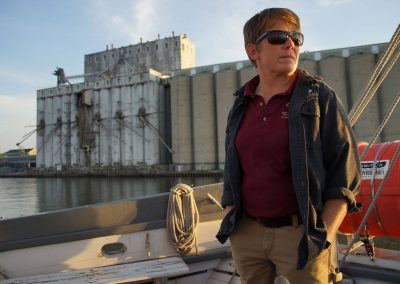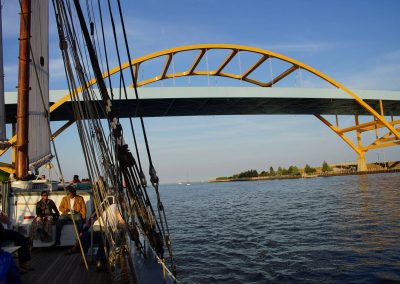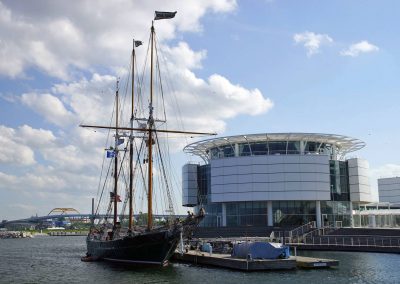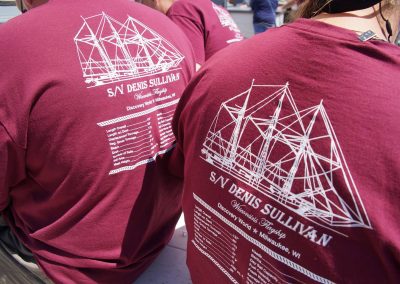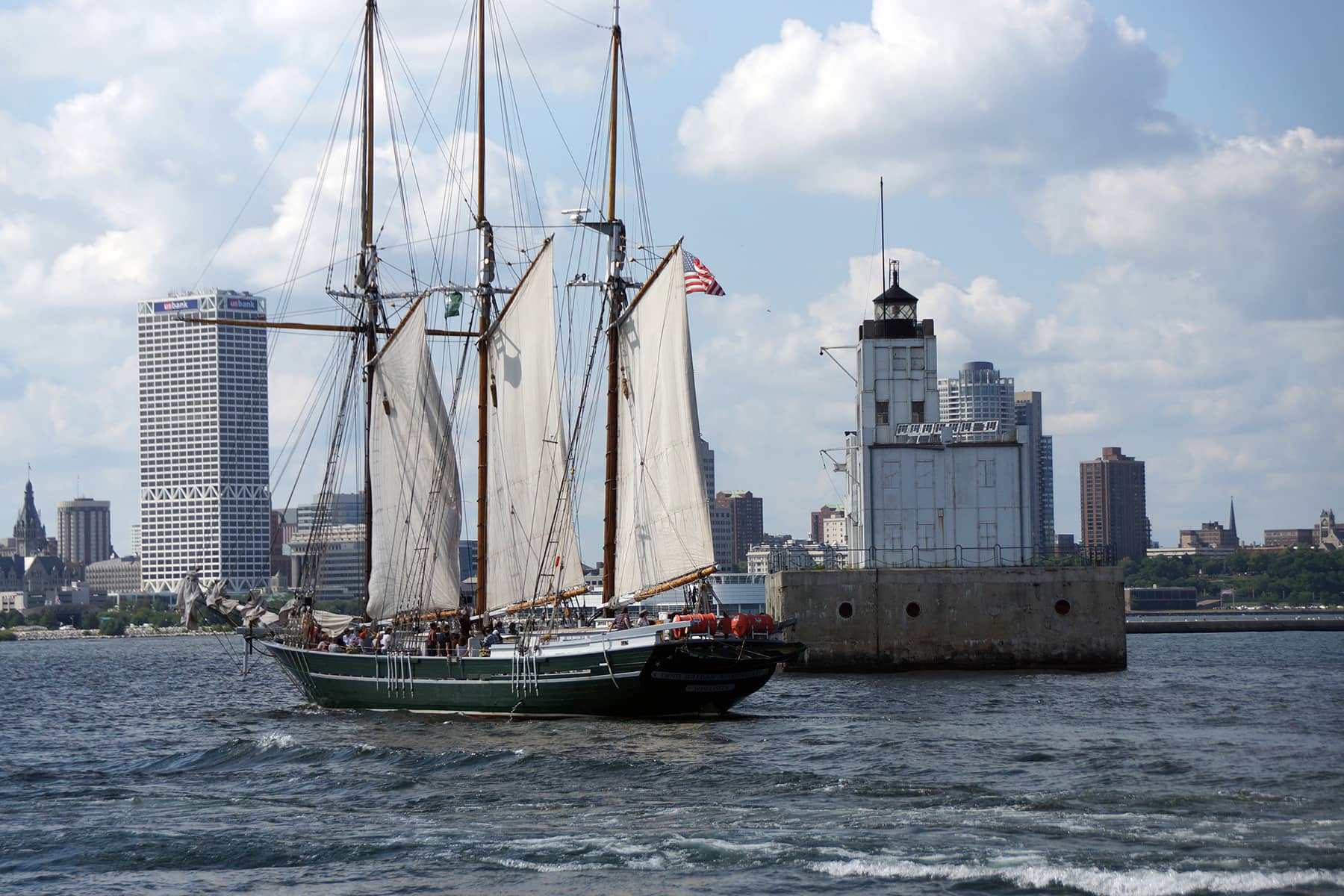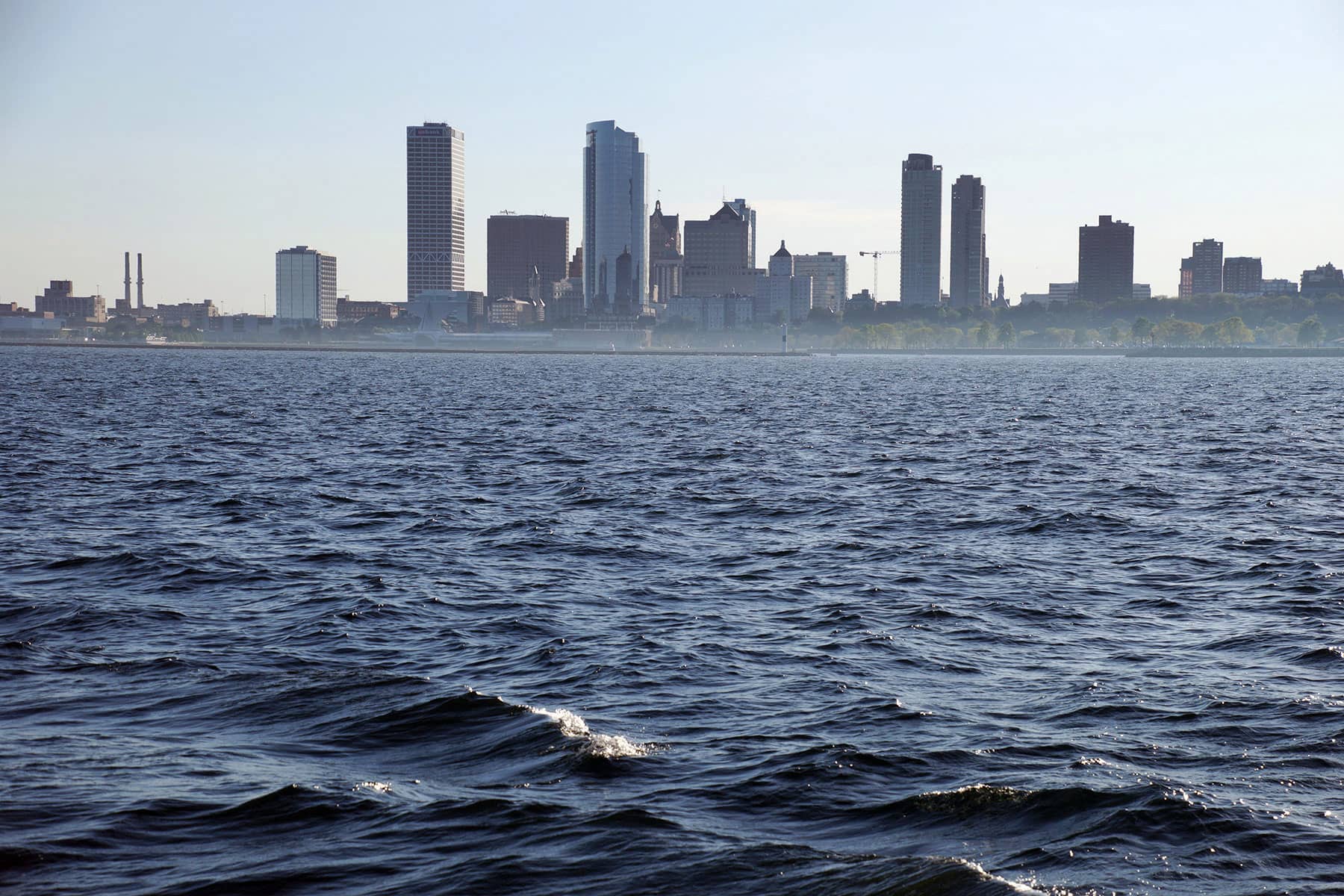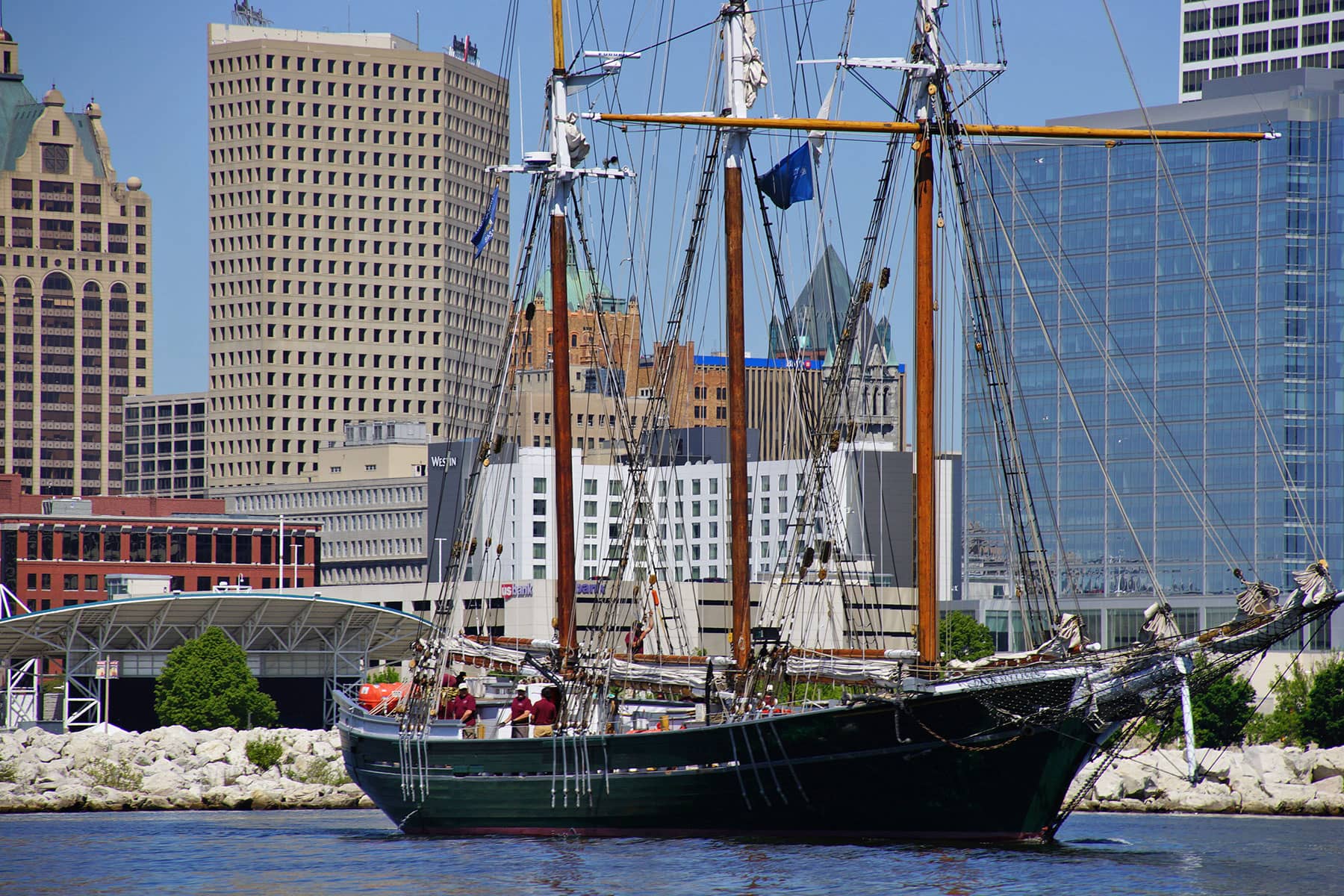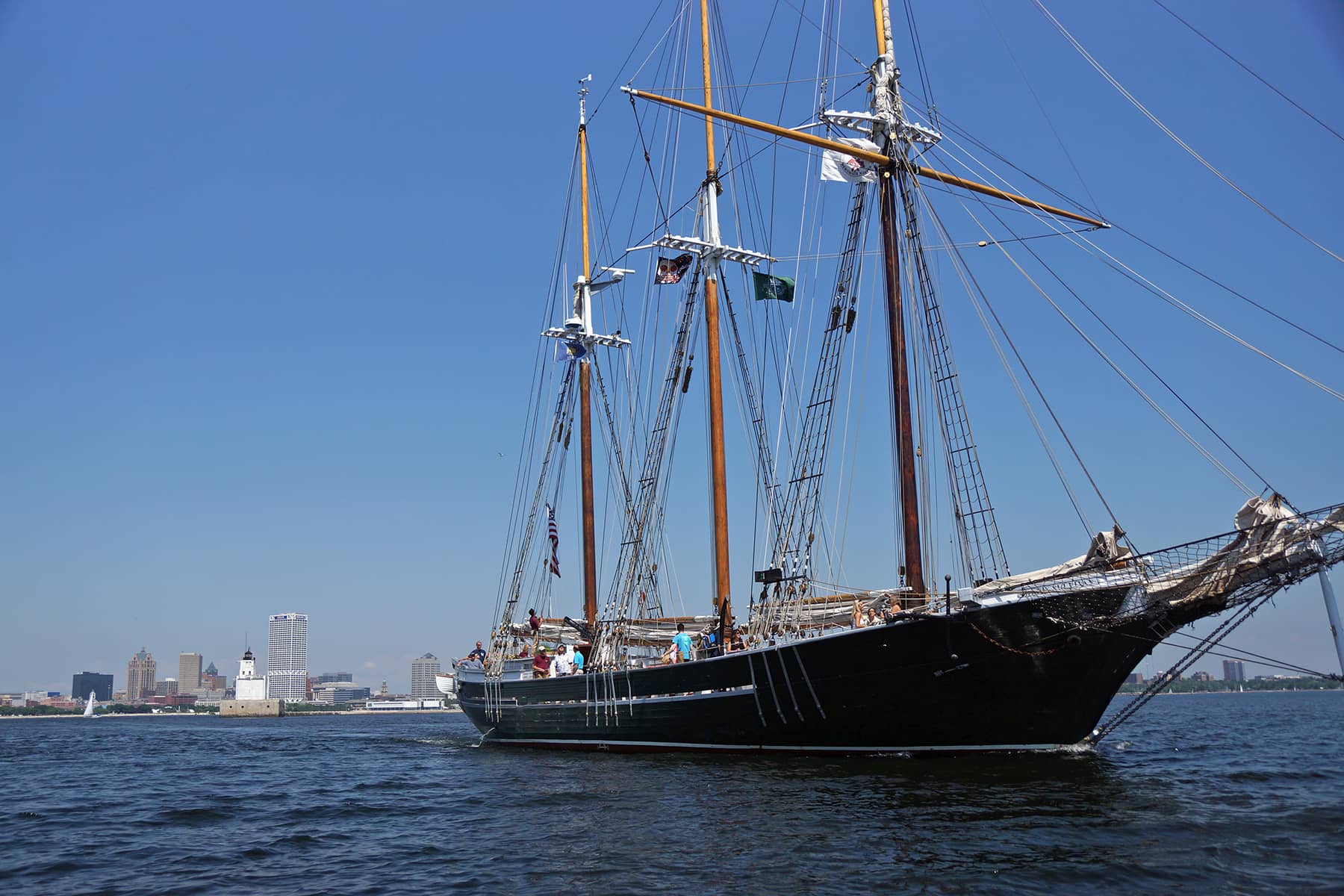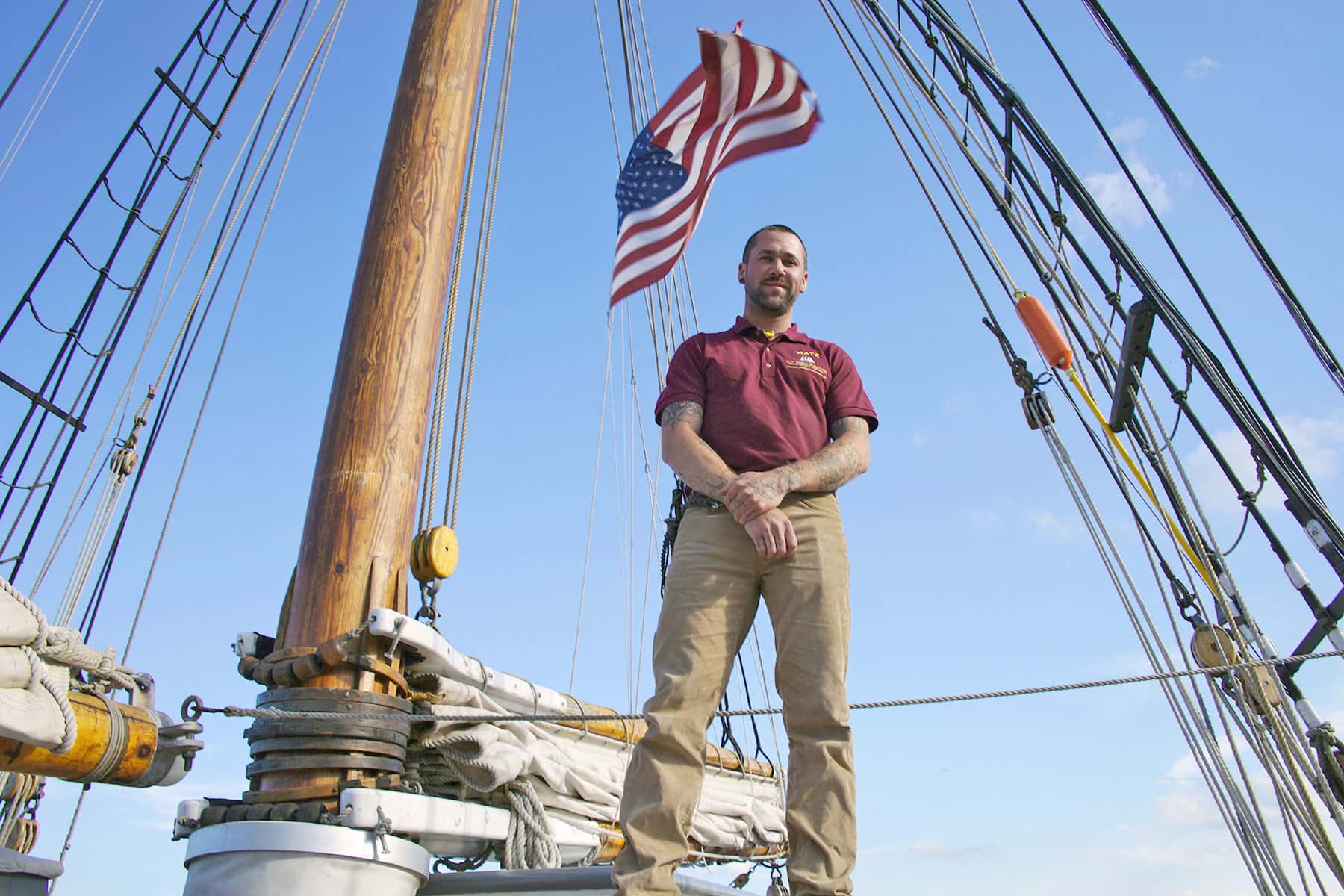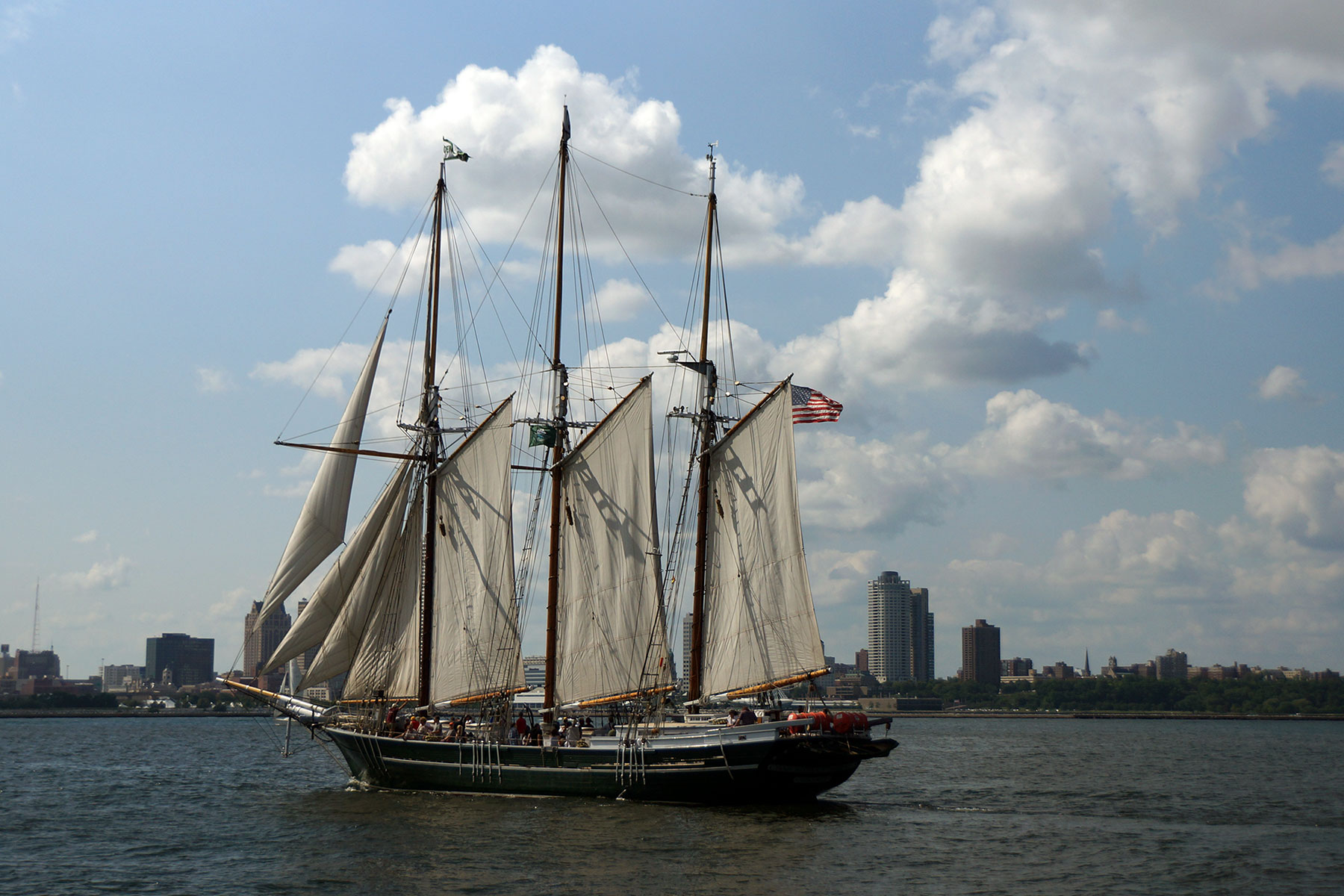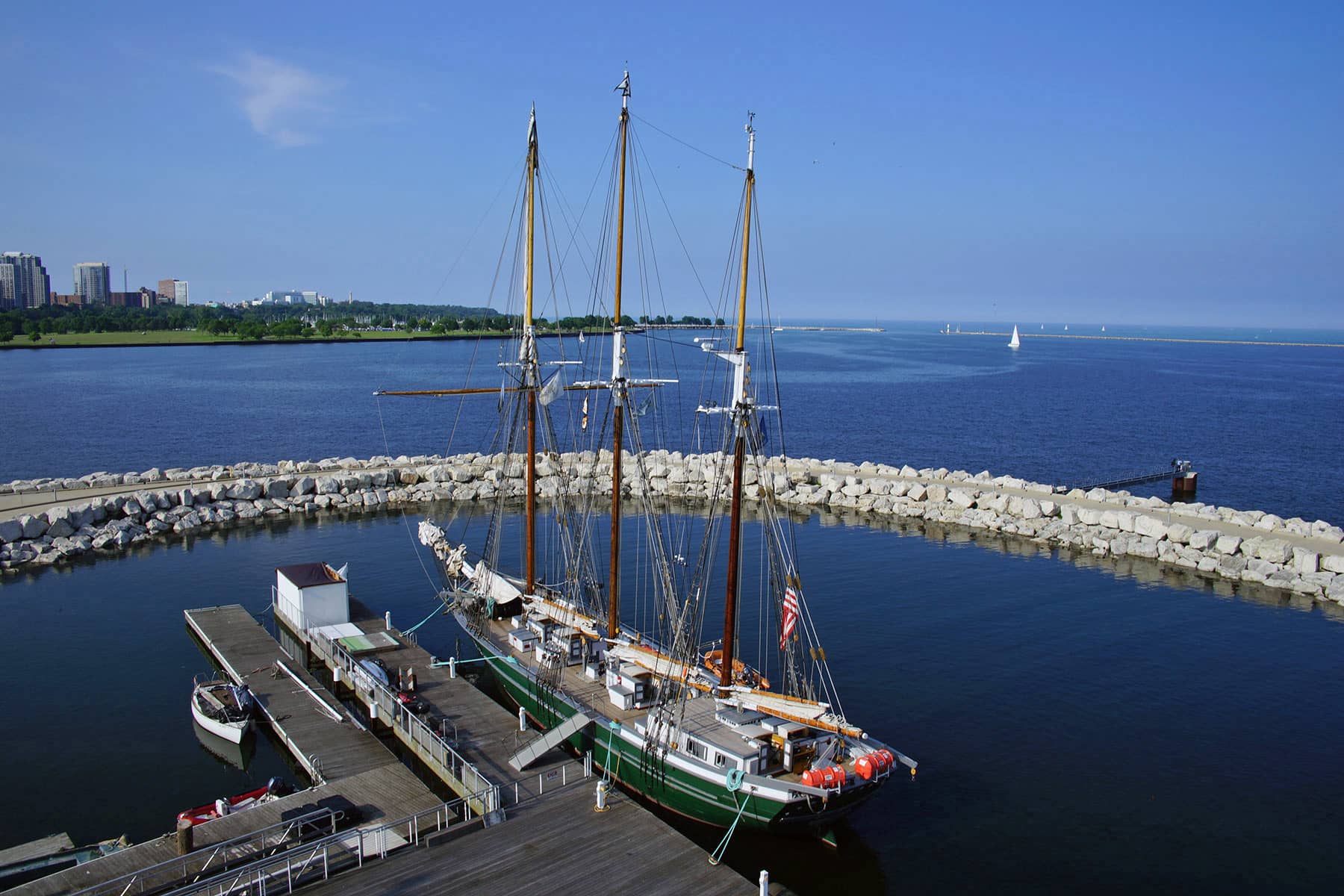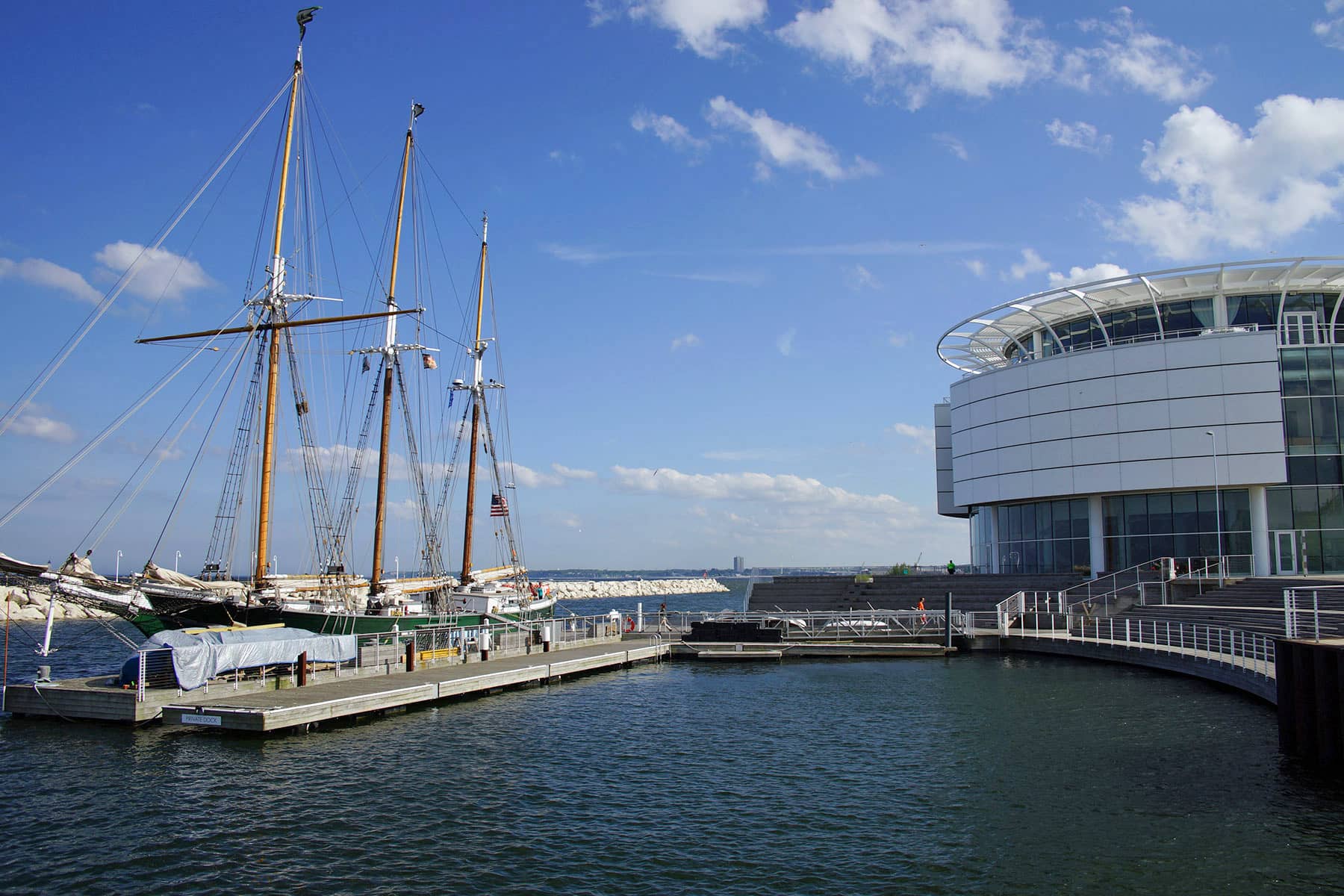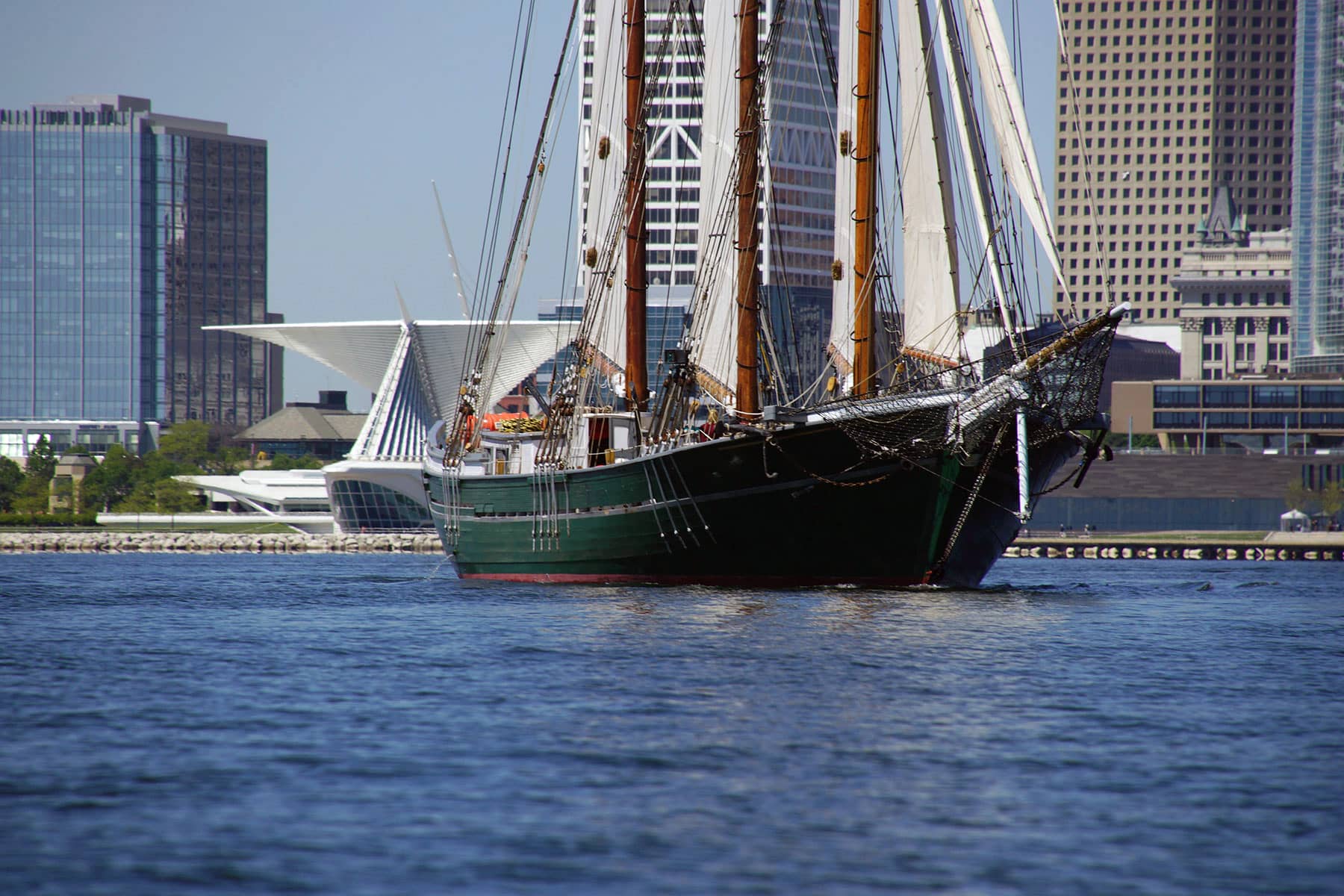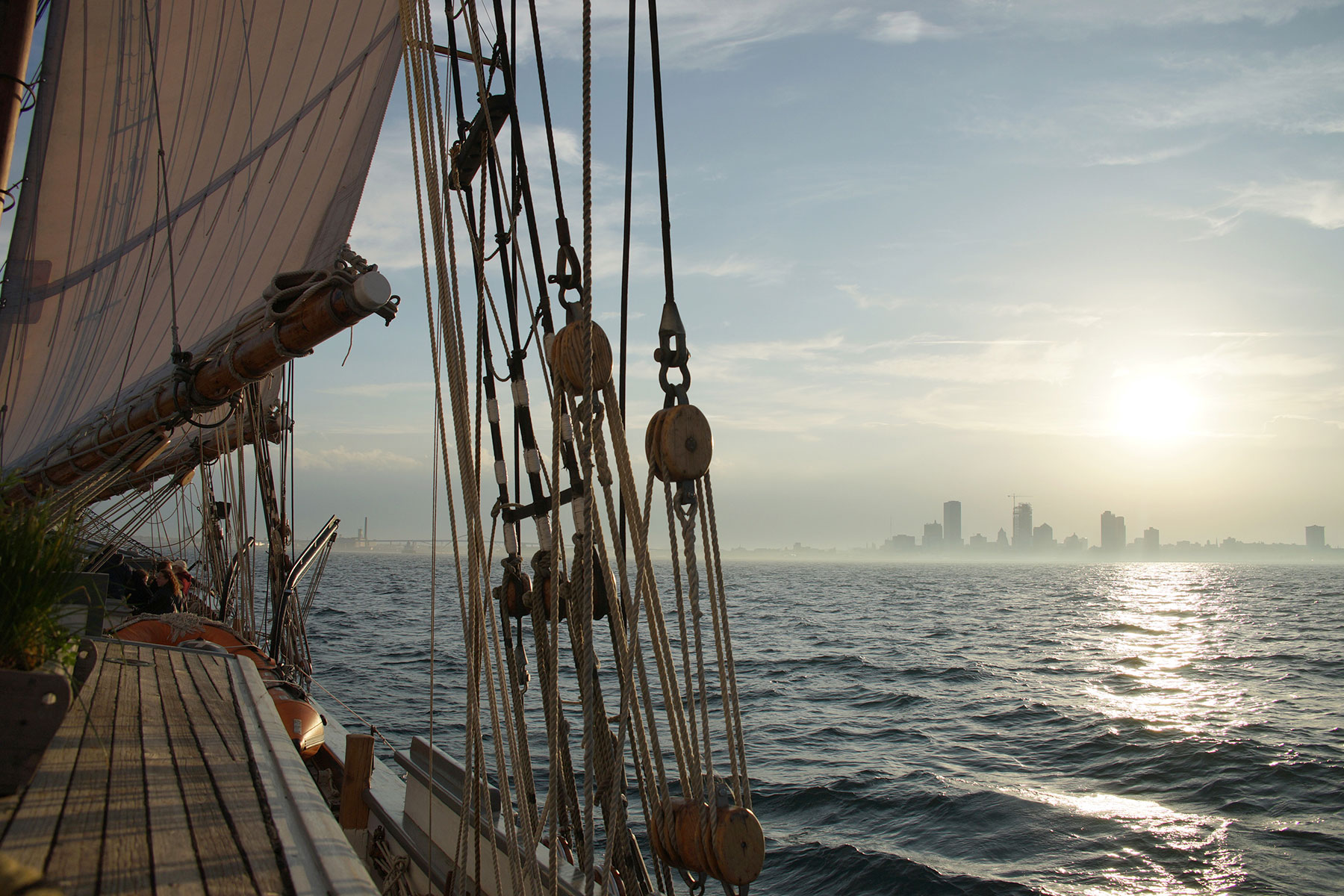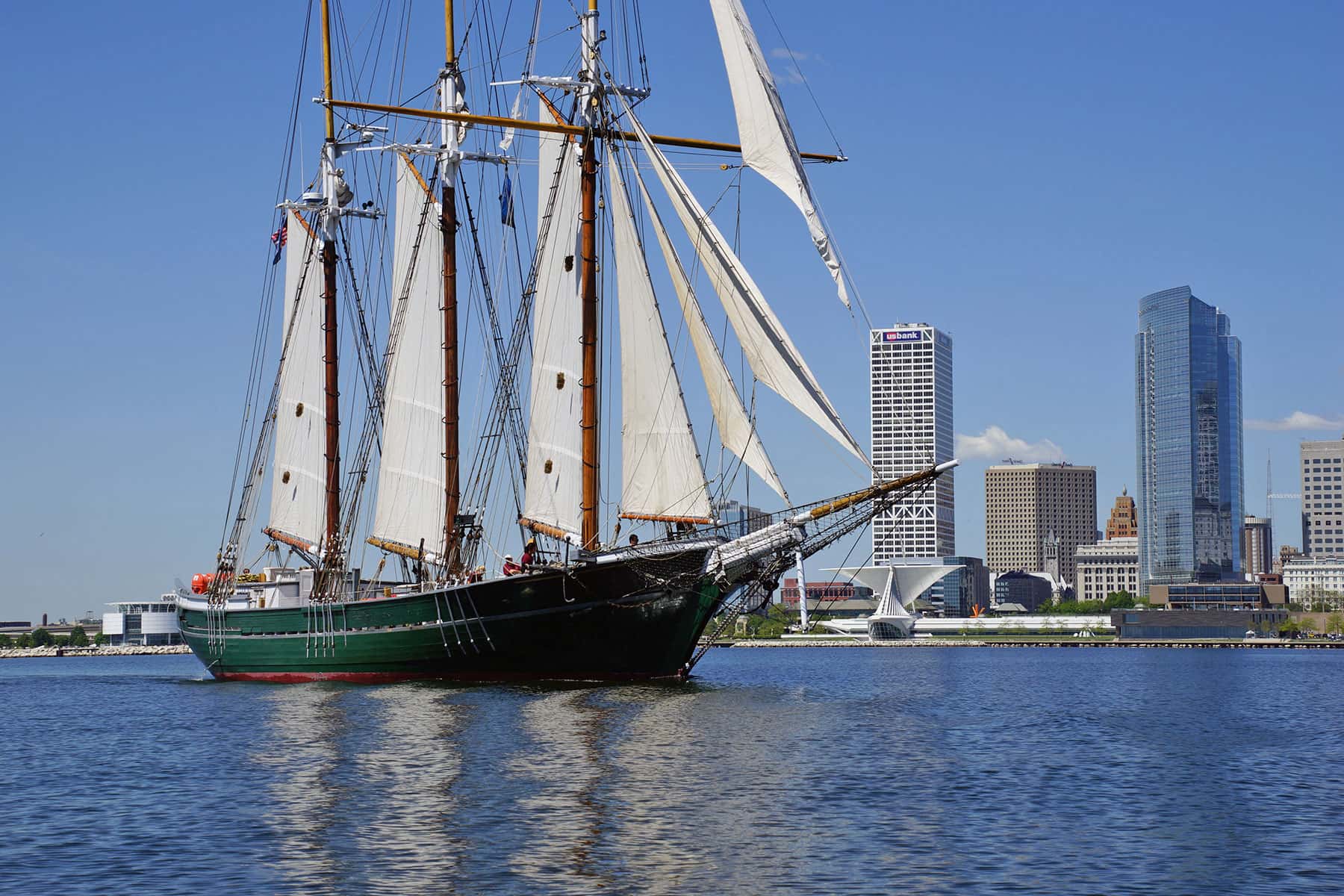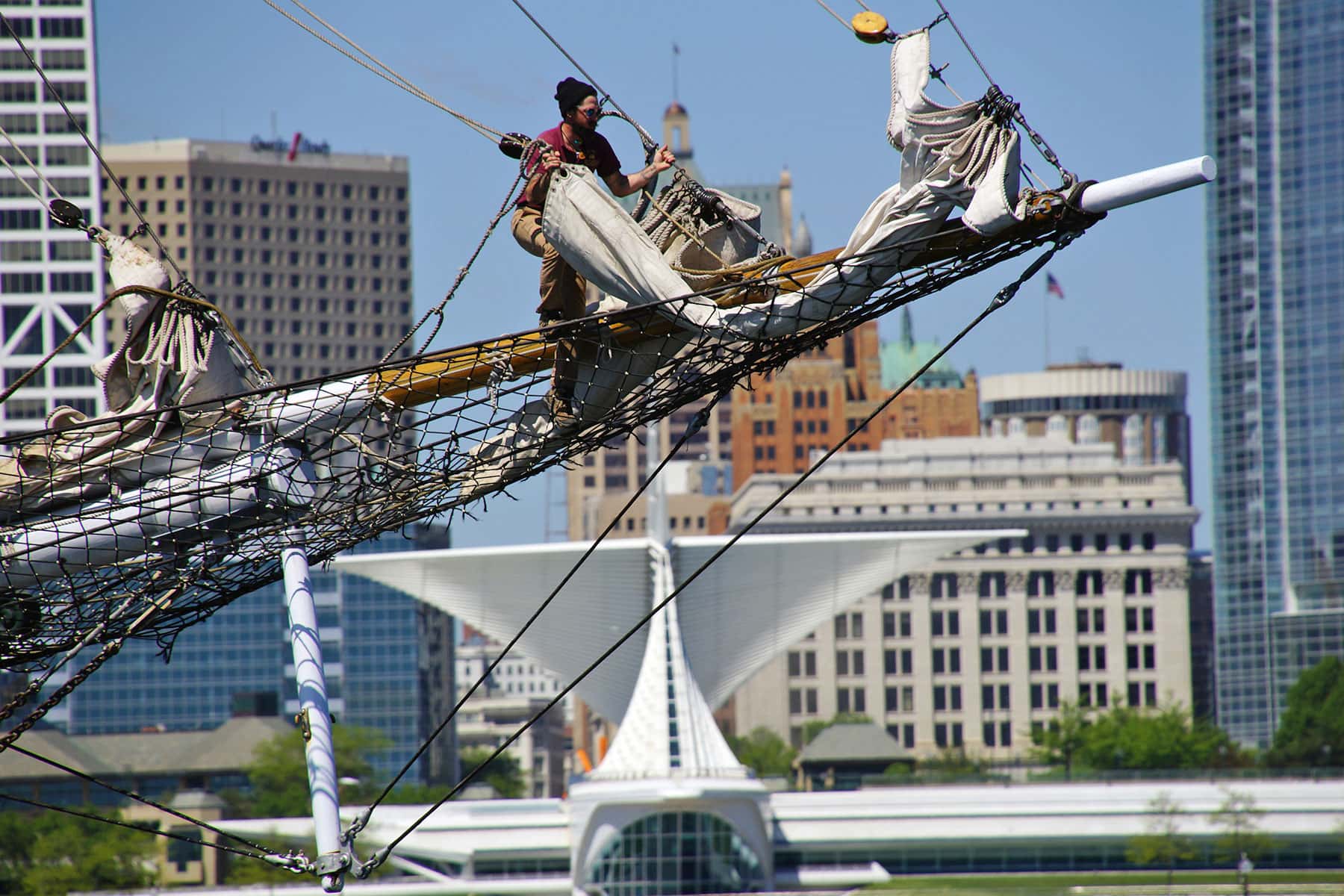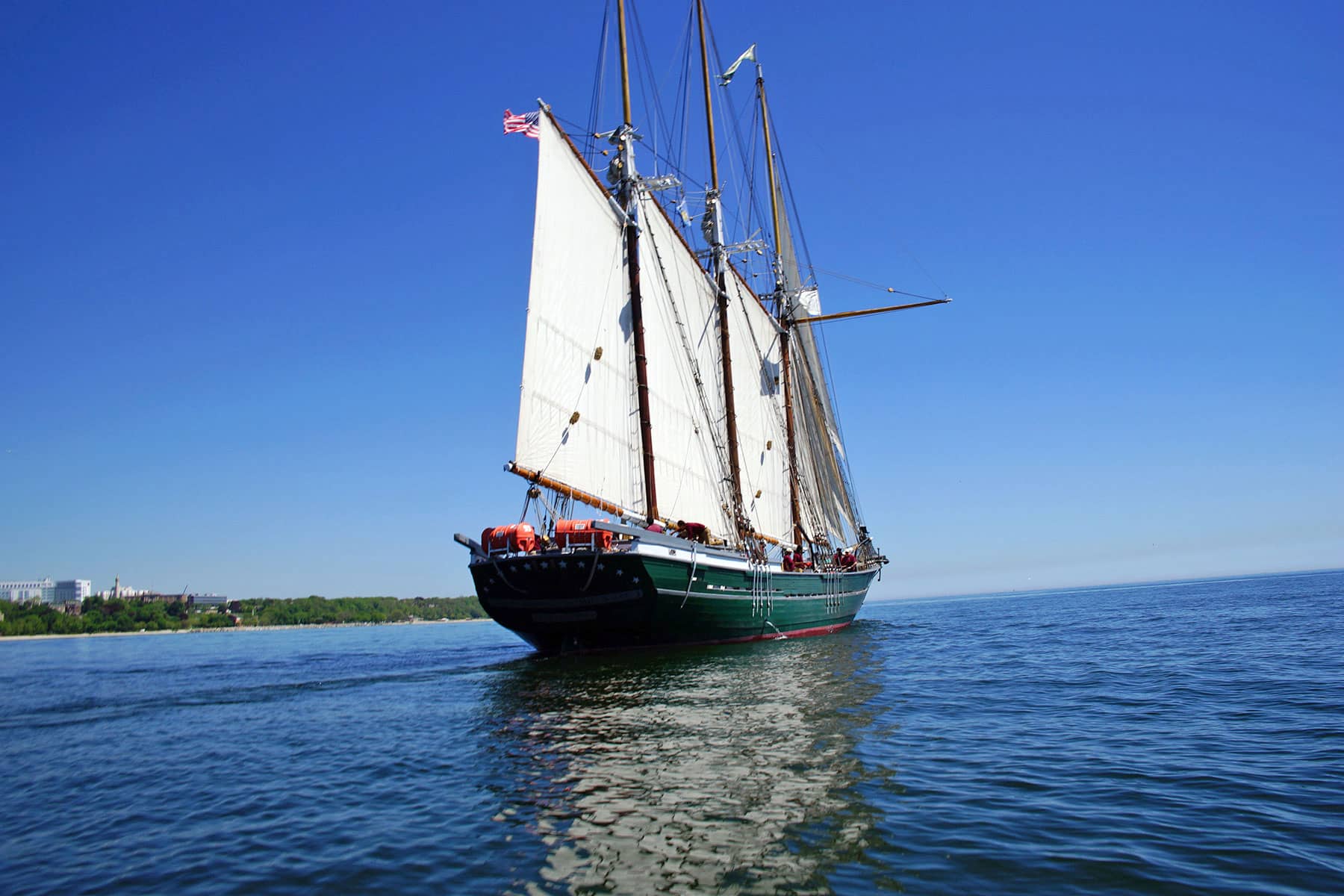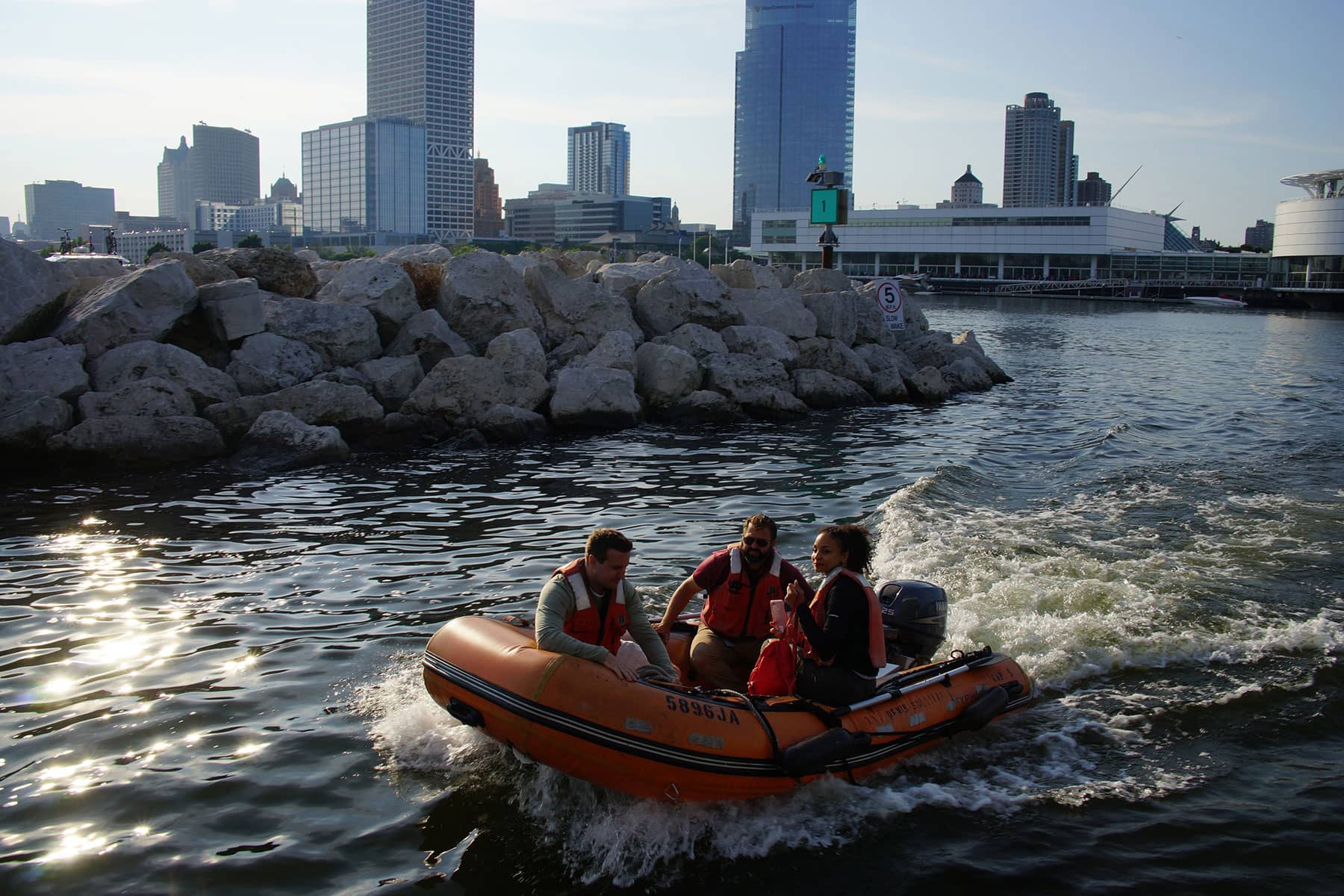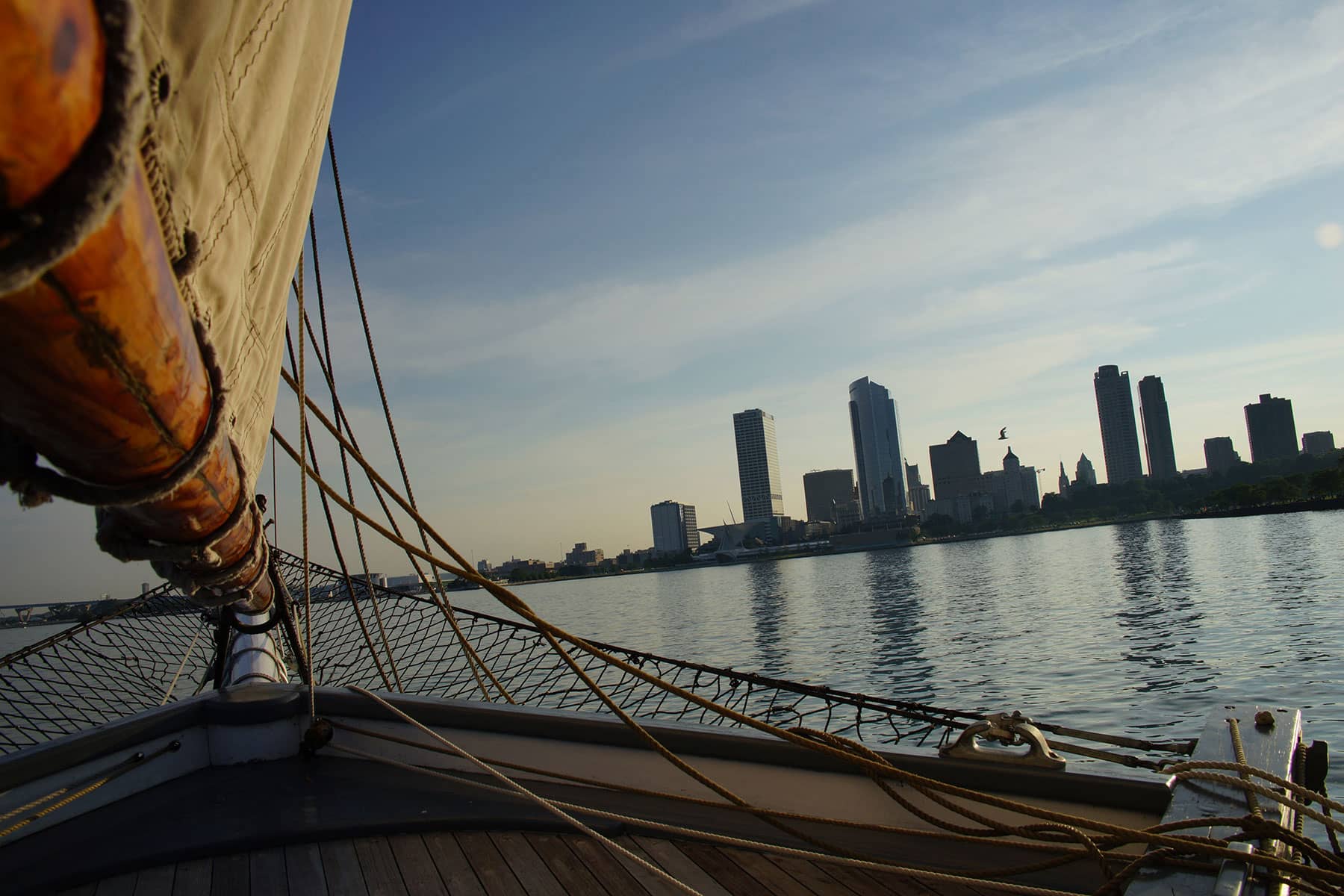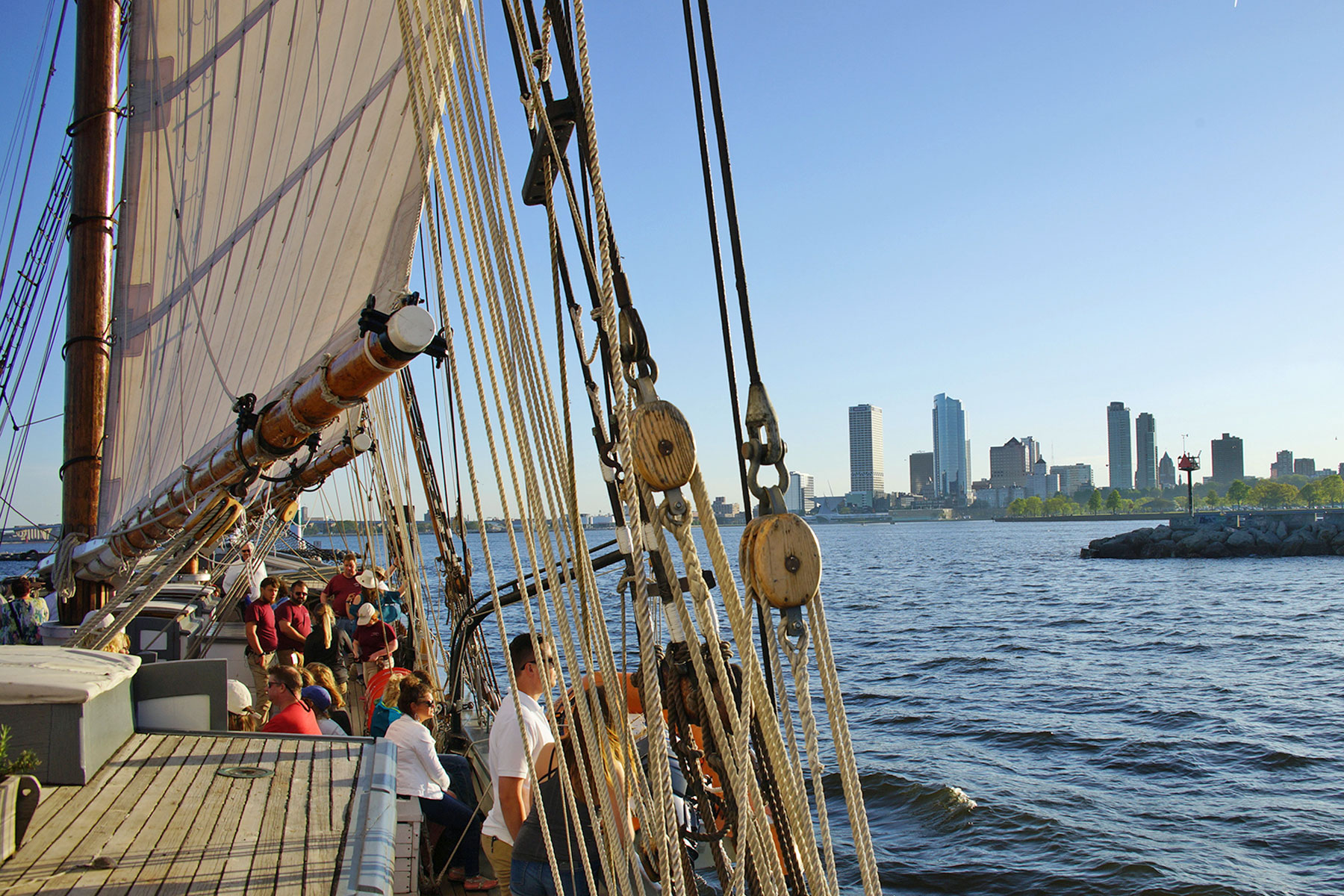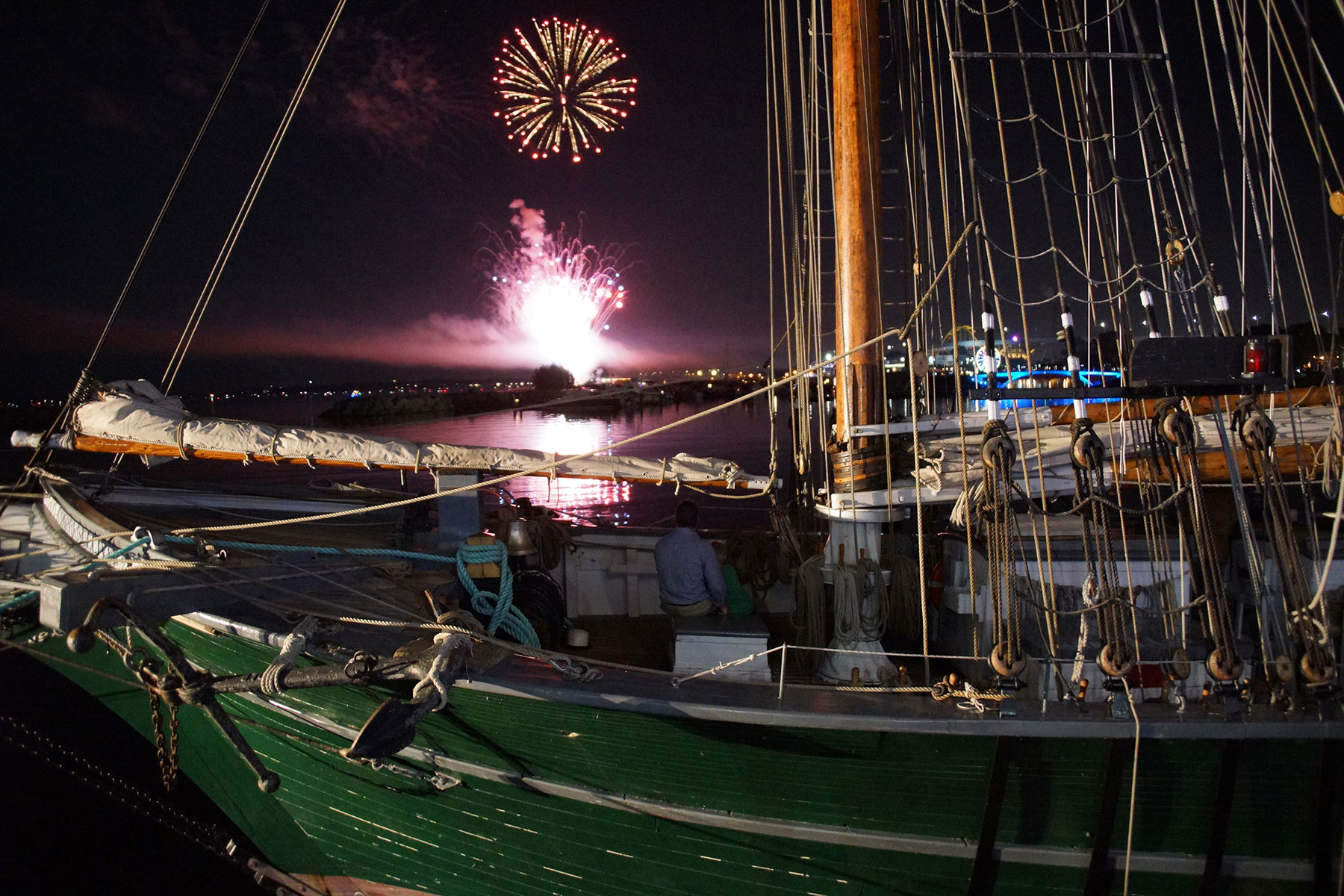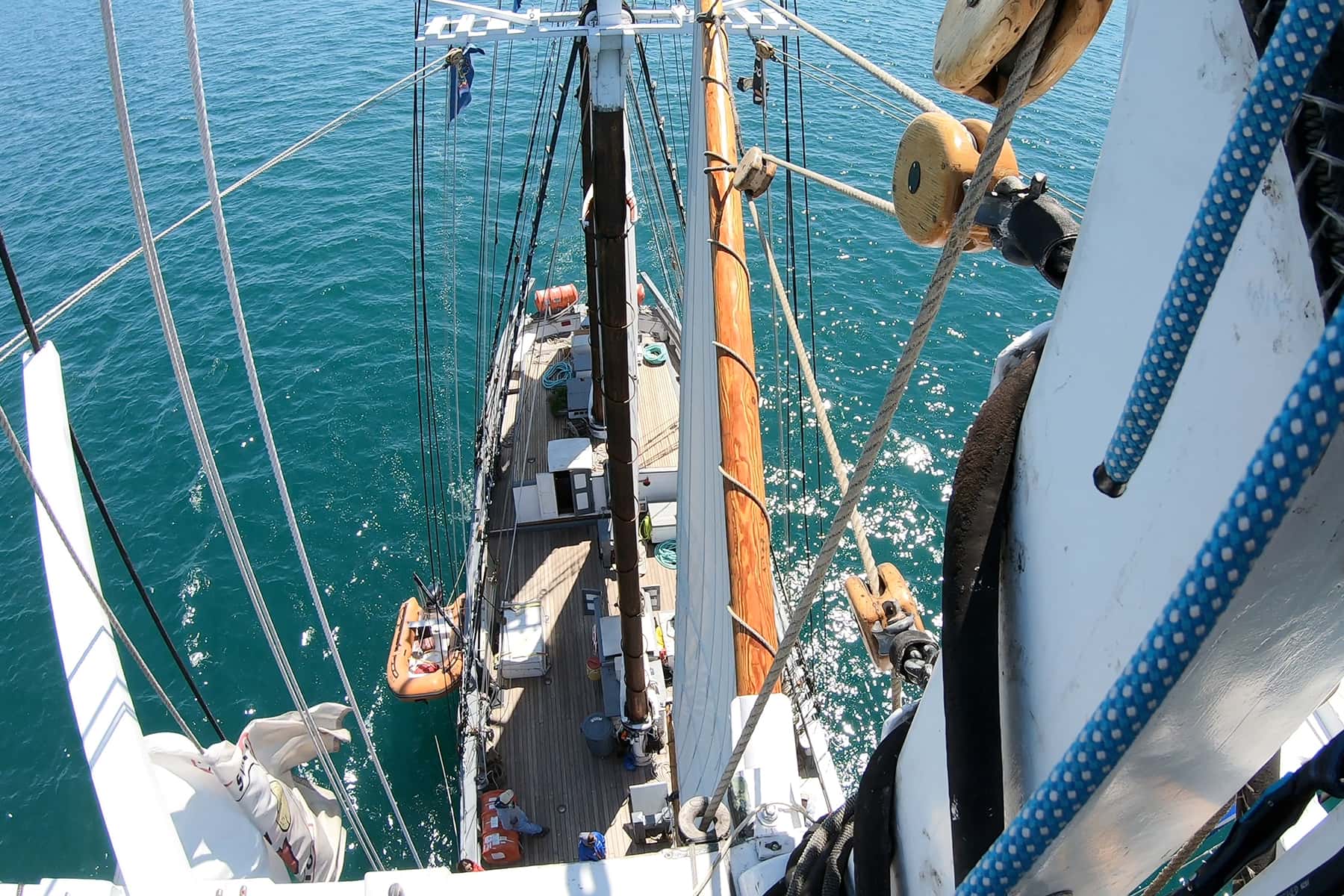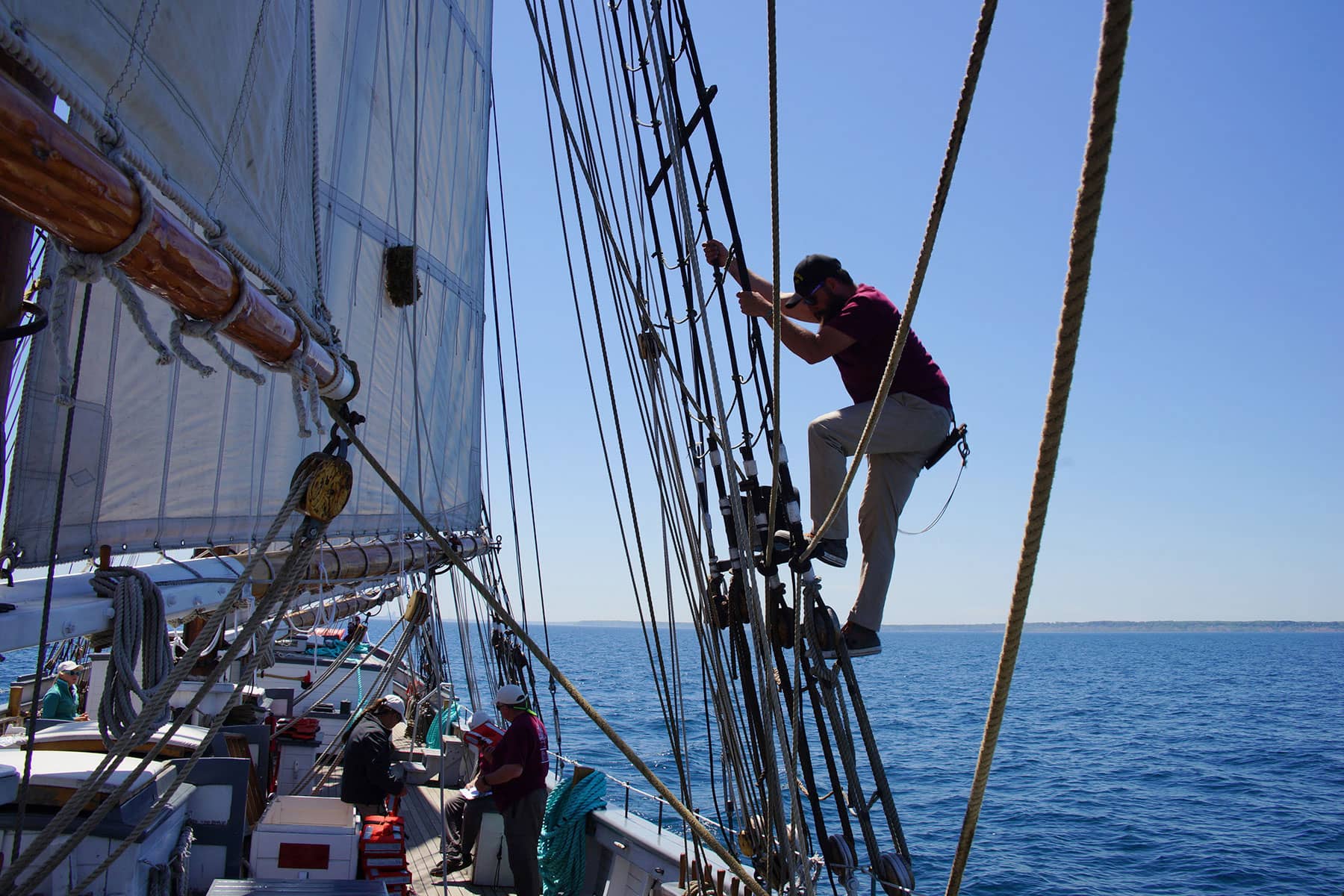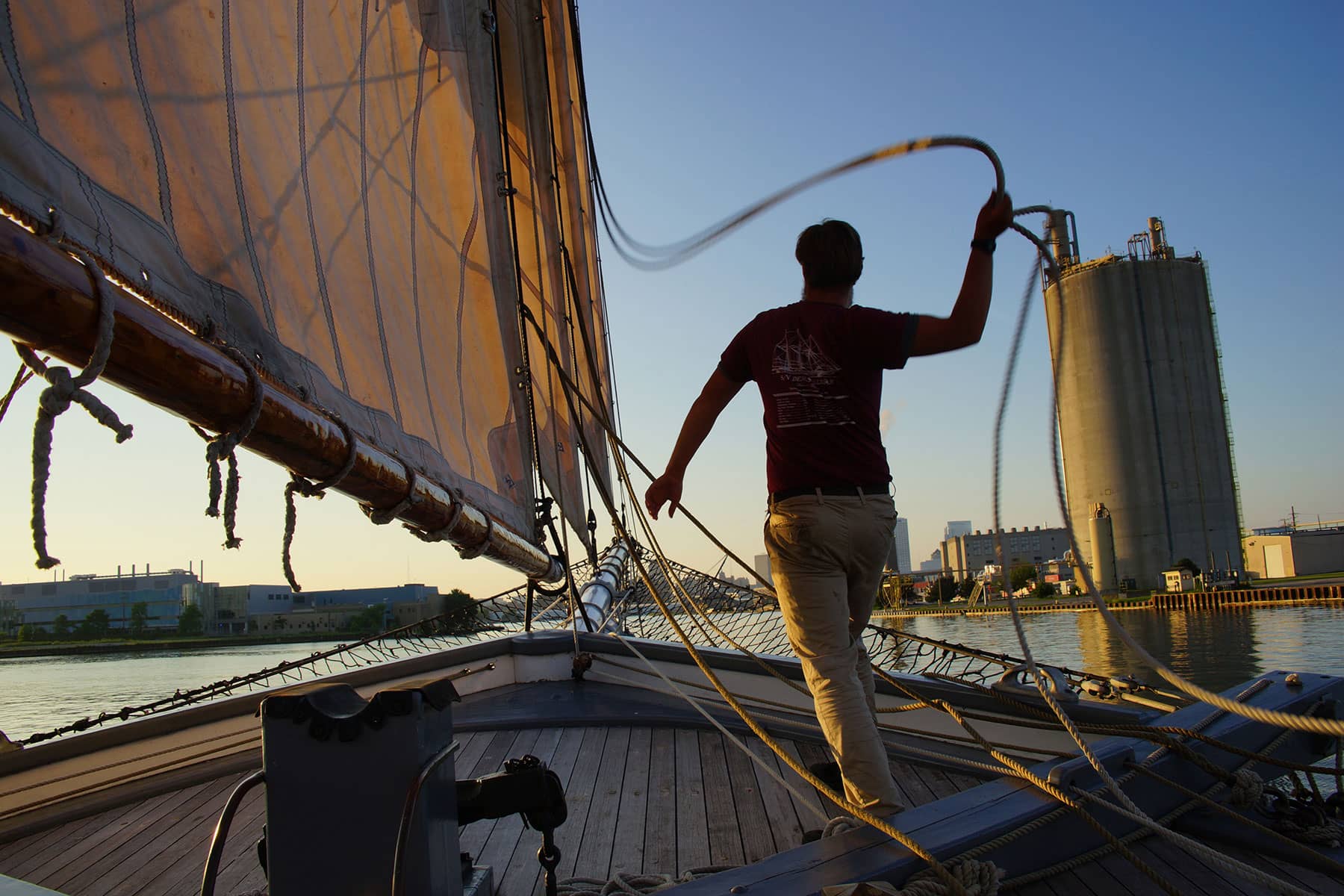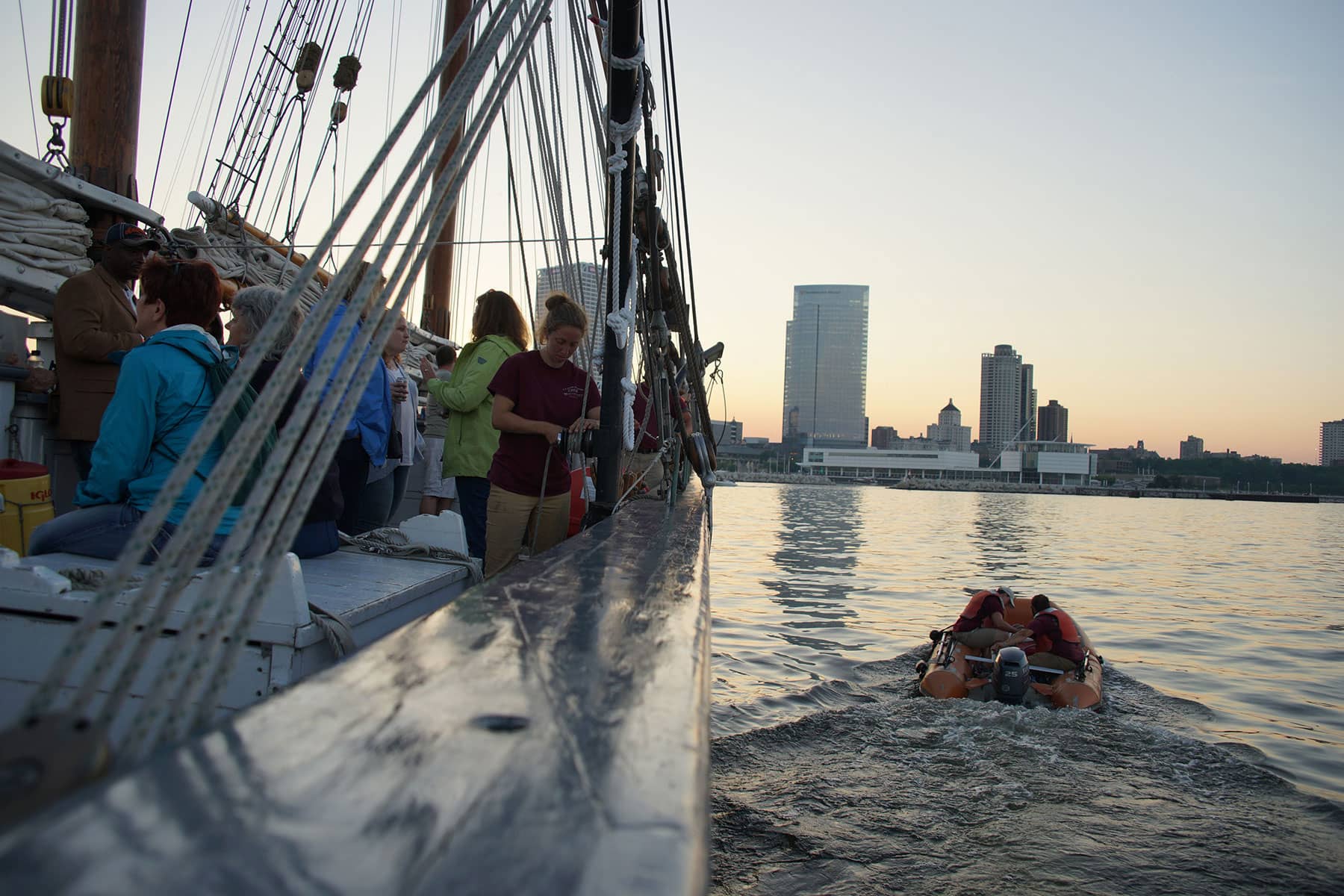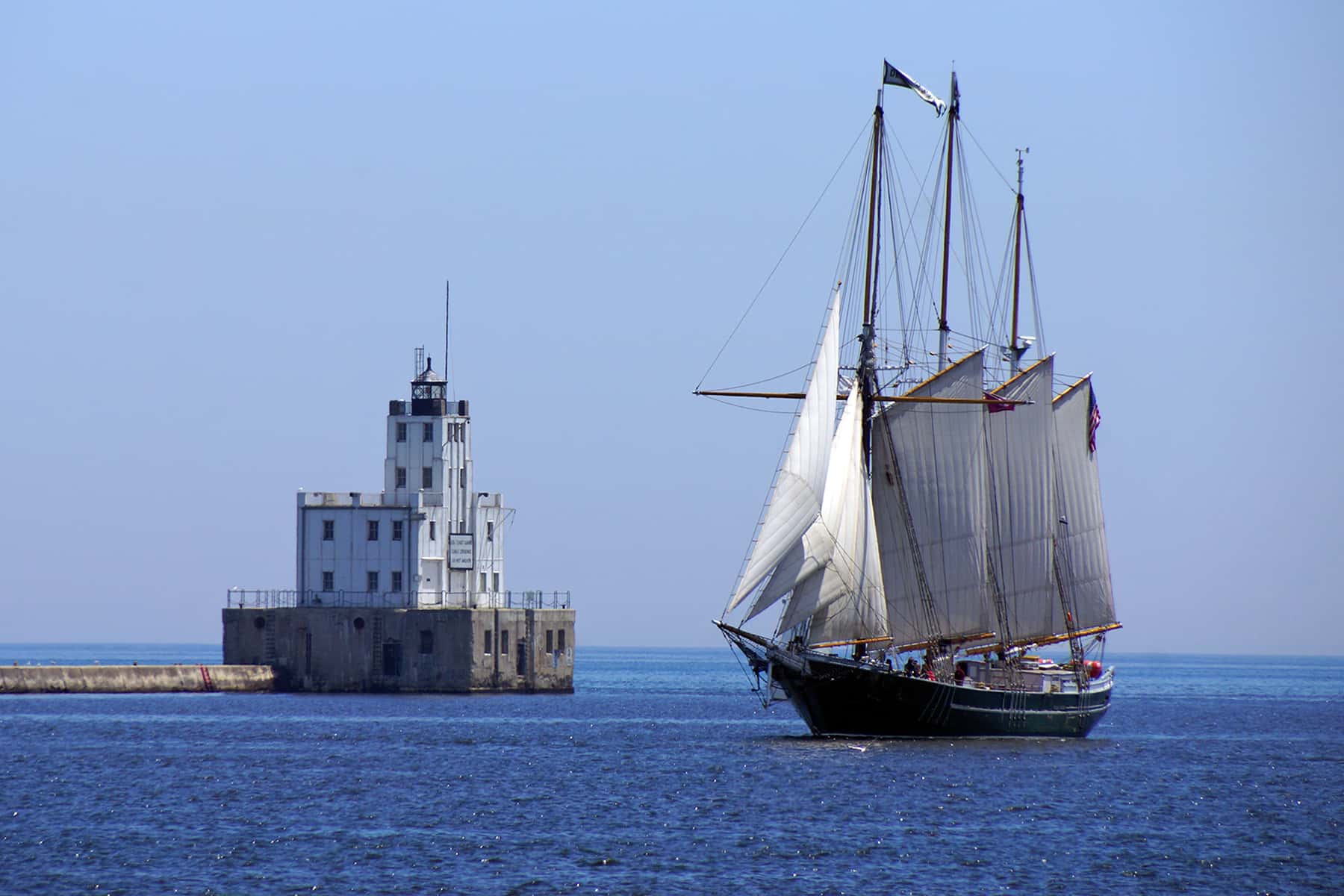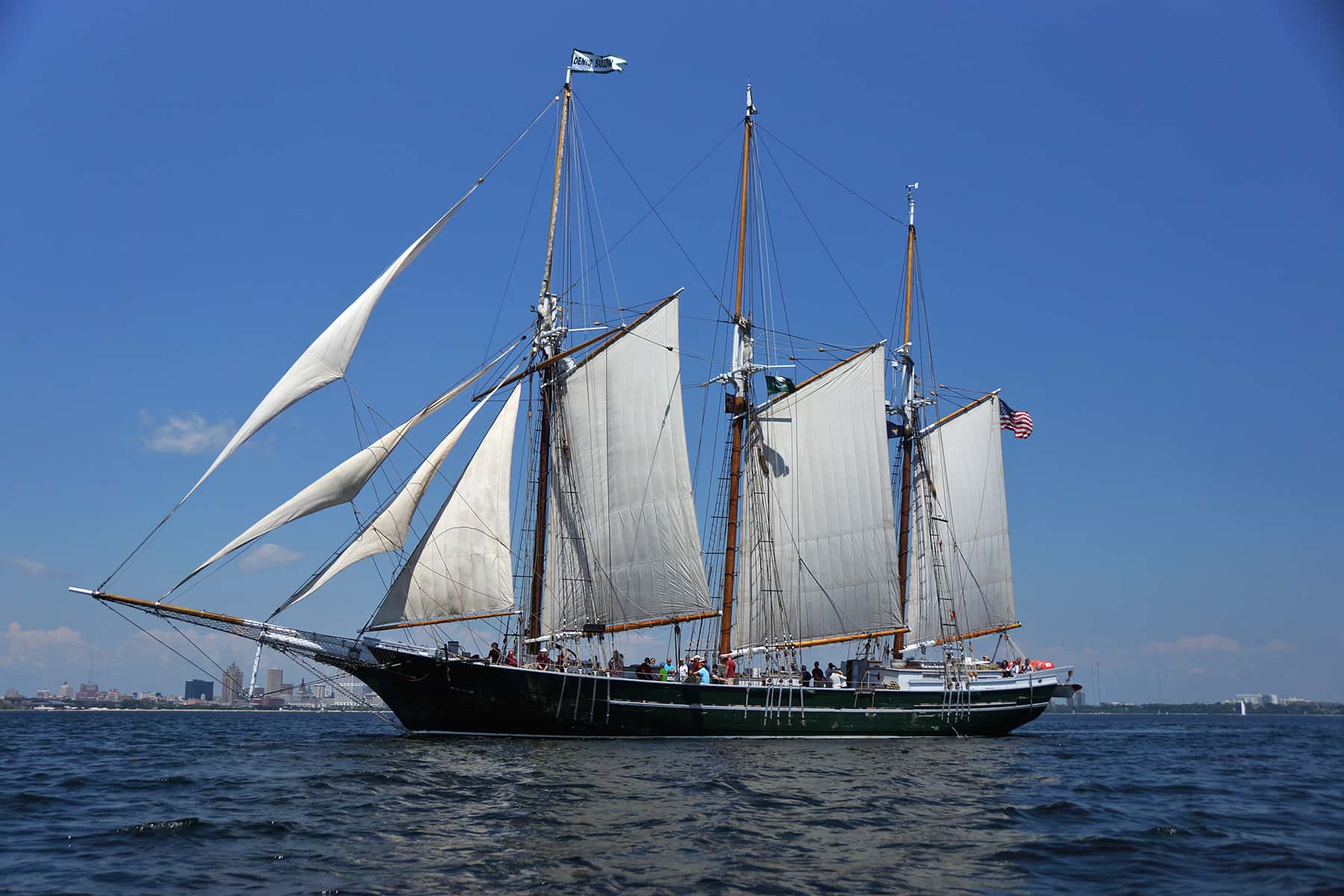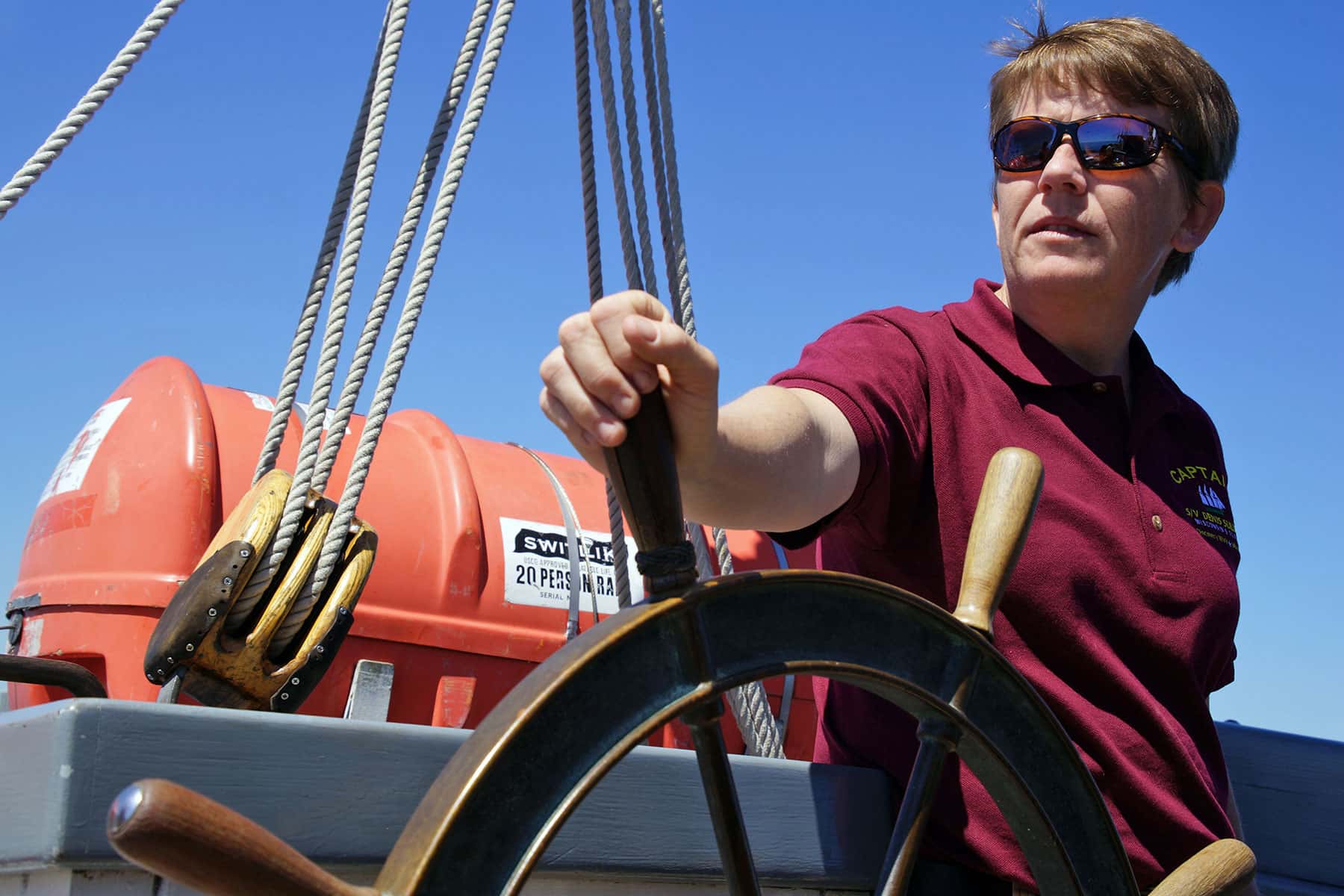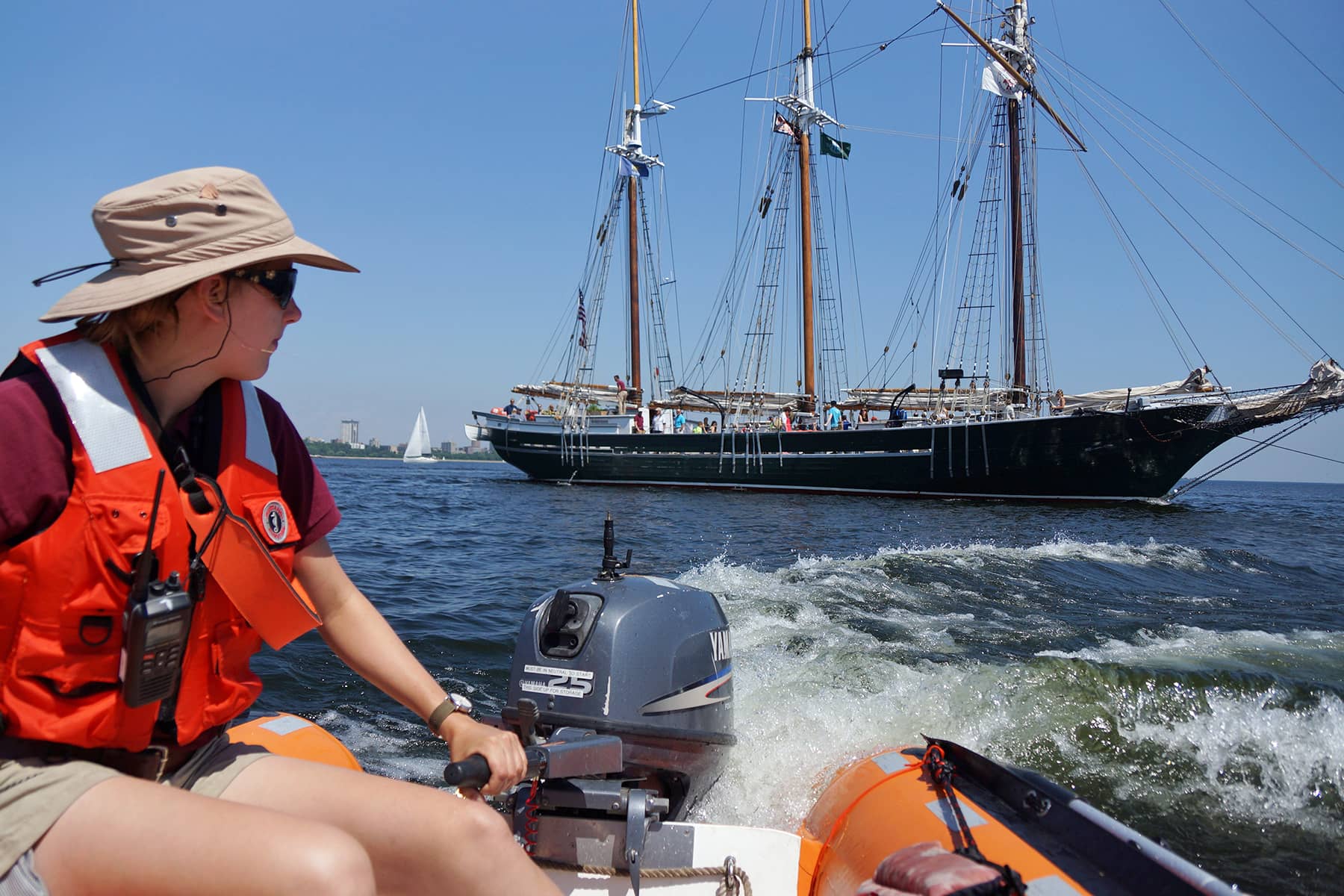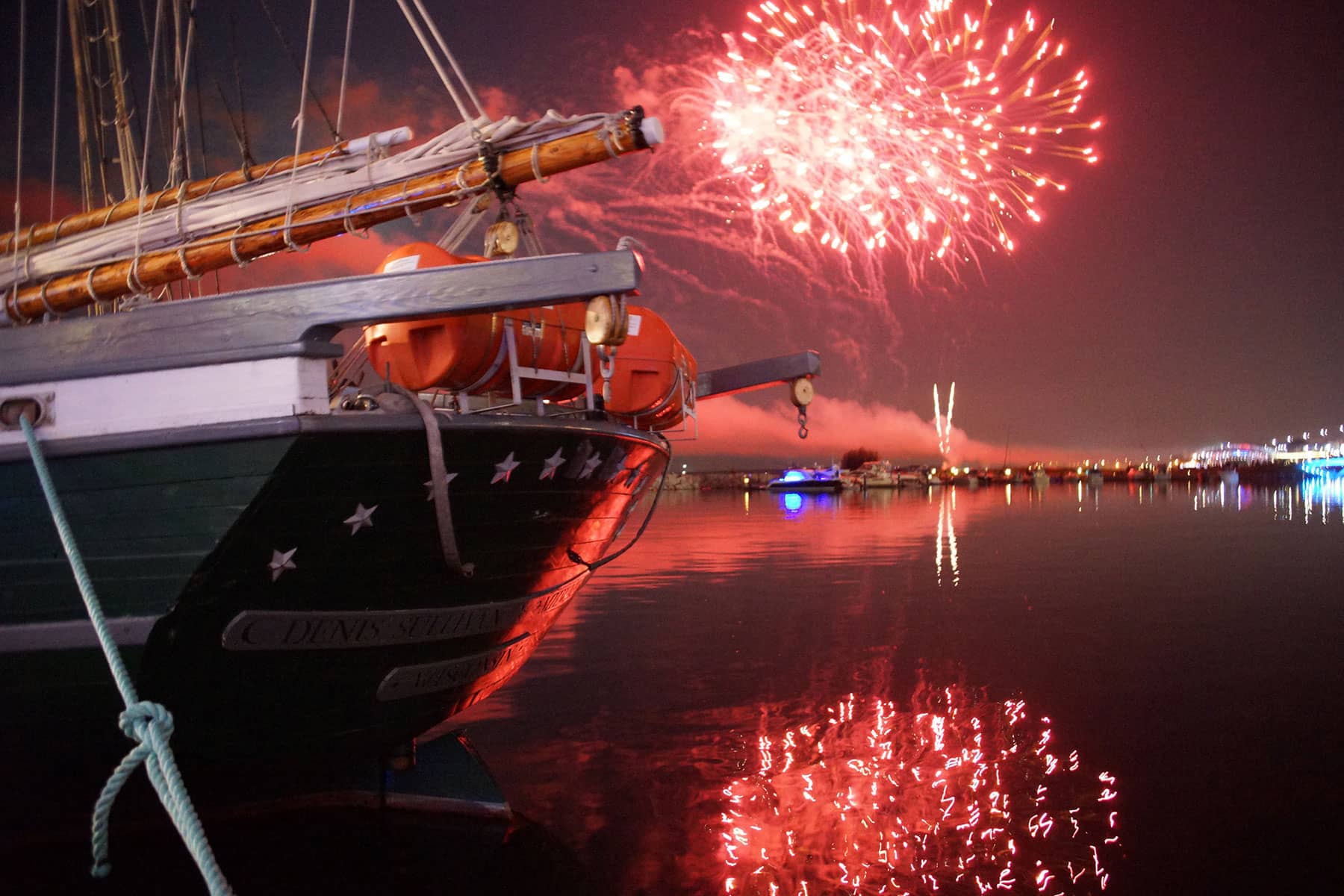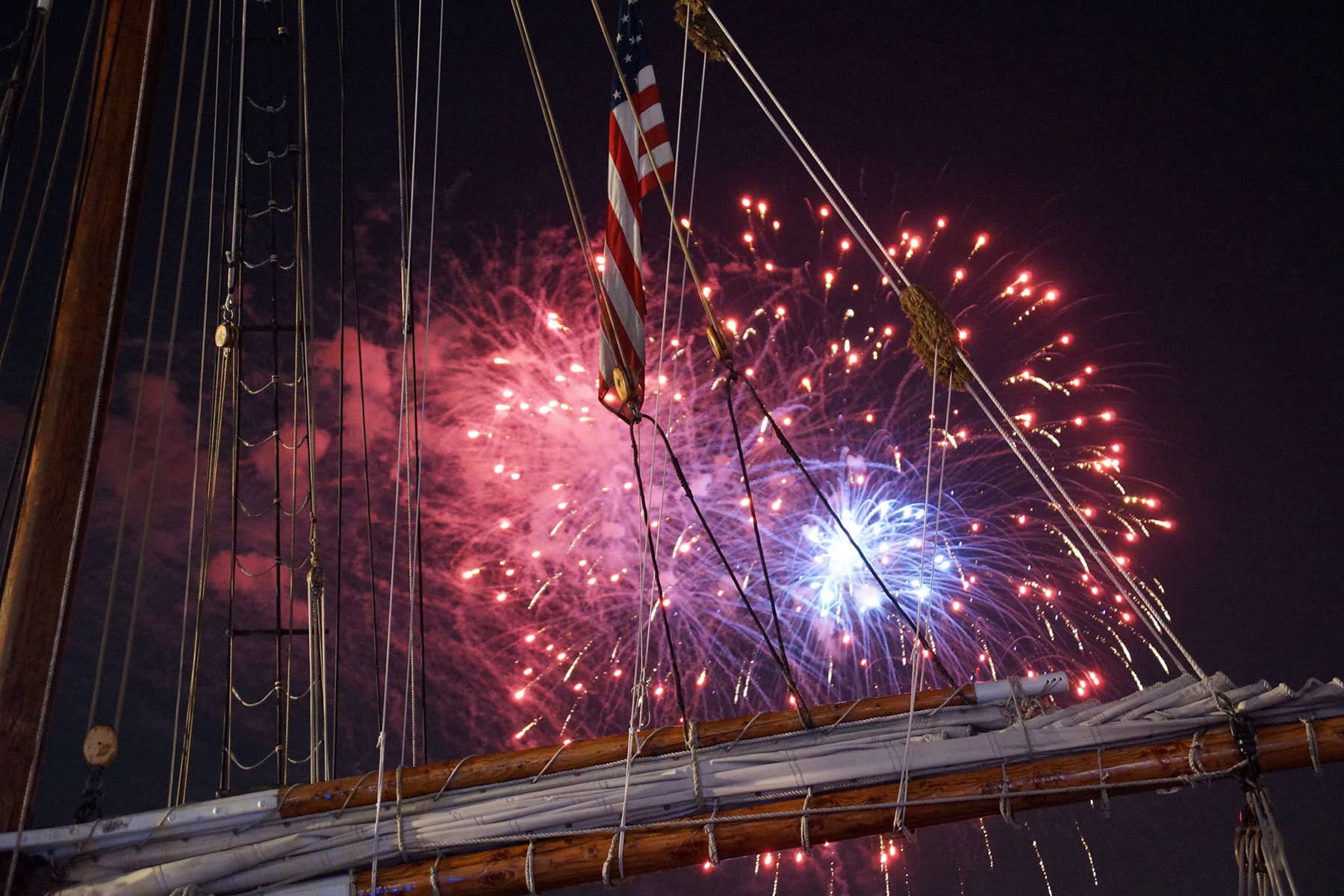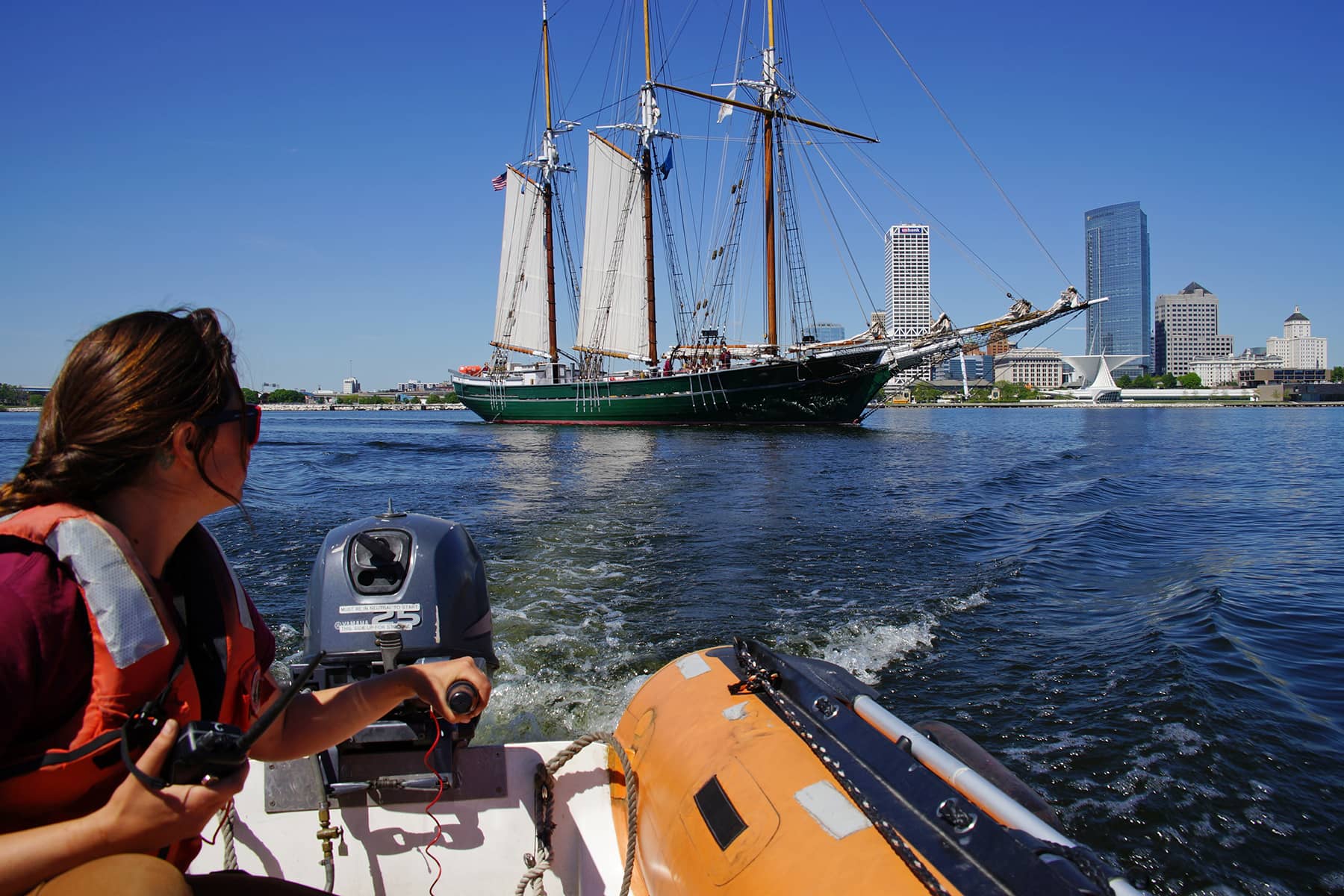
It was suddenly announced in September that Wisconsin’s flagship schooner, Discovery World’s S/V Denis Sullivan, would be sold to a nonprofit educational sailing organization based in Boston. It was an unexpected end to a journey that began in 1991, and ran aground like so many things in Milwaukee due to the COVID-19 pandemic and a local ambivalence to preserving cultural treasures.
The beloved Denis Sullivan launched in June 2000 after two years of construction, at a financial cost of $4.2 million and a labor cost of a million volunteer hours. It was originally proposed as a tall ship that would serve as a platform for educating people about the Great Lakes. The ship was not a replica of a specific vessel, with the design inspired by the cargo schooners of the 19th century.
I vaguely remember hearing about the ship before I moved overseas in 2001. Spending the summers of my youth on Milwaukee beaches, there were still remnant wooden pilings along the shoreline that had once been part of the docks used for Wisconsin’s great sailing ships.
During that era of my childhood, Milwaukee had a department store chain called Treasure Island – considered a discount retail division of JCPenney. I could walk to one store from my Grandfather’s farm, and it was where I first discovered video games.
When one summer ended and I returned to the South for the school year, I found it amusing to read a book by Robert Louis Stevenson called “Treasure Island.” I think I originally started reading it to find out where pirates went shopping. Eventually, the swashbuckling adventure captured my imagination. That coincided with numerous classic pirate movies that were shown on local TV stations.
The idea of actually seeing a pirate ship sail across the horizon belonged to a lost age. I had seen TV news reports over the following years of vintage Spanish Galleon being discovered, or restored, or replicas making some commemorative voyage. But their existence remained a work of fiction, like “Treasure Island,” in my mind.
I would eventually stand on a tall ship, but ironically not until 2010 when I lived in Kamakura, Japan. The Nippon Maru was a Japanese museum ship and former training vessel that was permanently docked in Yokohama harbor.
Almost two years later, and close to a year after the massive destruction from the 2011 Tōhoku earthquake and tsunami displaced my life in Japan, I found myself back in my Milwaukee hometown, standing on the shores of Lake Michigan.
Gliding over the tranquil surface of that inland ocean was the Denis Sullivan, and I finally saw a pirate ship sail across the horizon for the first time.
It was a thrill to behold, and I remember the sense of pride that I felt for Milwaukee. So much of the city’s history had been lost, but the Denis Sullivan was a living museum that represented a nautical past. Tall ships had been the lifeblood of the region for commerce and transportation, before the railway supplanted it.
For the longest time, I referred to the Denis Sullivan as a pirate ship, because it seemed that most Milwaukee residents were either unaware a schooner existed or were unfamiliar with its name. My ignorance had been mostly due to the absence from living overseas. So it did bewilder me at the time how such an important icon could be so public yet so invisible.
Within another year I would be working for the Milwaukee Business Journal, and covering an event at Discovery World. That connection, and the frustration of so many local residents who were oblivious to the Denis Sullivan, inspired me to convince my editor to let me produce a photo essay about the vessel.
It was July of 2014, and the Denis Sullivan was then making a public sail on Friday, followed by two on Saturday and Sunday. I picked a Friday so I would have the weekend to select photos by Monday. However, the weather was overcast and gloomy. While there were snapshots of the Denis Sullivan on the Internet, and various news reports about the ship, no media coverage had included any extensive photography at that time. I did not want my images to look dreary, and be a visual disincentive for the public to try sailing.
I was able to convince Paul Fladten, Discovery World’s Senior Manager and Public Relations Director, to let me sail again the following day, on Saturday. I felt it was vital to my news story, and the Denis Sullivan’s profile, that the images be spectacular. I could not accomplish that when the sky was a dull white and passengers were dressed like they expected a storm.
However, Saturday proved to be terrible weather as well, and included rain. I had taken plenty of detailed images of the ship and recorded many powerful interviews with the crew. But I still felt the environment did not allow me to capture inspiring images.
After another unprecedented ask, Fladten gave me permission to sail again for a third time on Sunday. It turned out to be the visual jackpot I had been waiting the previous two days for. The sun was bright against a clear blue sky, and passengers were dressed comparable to the summer warmth of July.
When my article, photo essay, and video published the news package became very popular, and in fact inspired other news organizations to produce their own more extensive coverage about the Denis Sullivan.
After I began work for the Milwaukee Independent in 2016, I wanted to produce a new photo essay and feature report on the Denis Sullivan. I sailed in June, and was later invited by Second Captain Carlos Canario to come along for the upcoming Tall Ships Festival. It was scheduled to begin on August 12, and the Denis Sullivan would be sailing for two weeks across the Great Lakes.
I began planning for the August 12 trip, but ultimately was unable to join the crew because of logistics. There was no easy way for me to depart the boat mid-sail and return to Milwaukee, so I would have needed to commit to a two week voyage.
As fate would have it, the day after the Denis Sullivan embarked with me remaining onshore, a riot began in the Sherman Park neighborhood of Milwaukee on August 13, sparked by the fatal police shooting of 23-year-old Sylville Smith.
Reggie Jackson’s column for Milwaukee Independent on August 15 about the aftermath, Reggie Jackson: Sherman Park and the evidence of things unknown, brought our fledgling news organization international attention about an hour after we published it. The insightful column also completely altered the narrative reported by the national news media.
Local news outlets, however, were very slow to let go of their fear-based chum that “the sky is falling.” By the end of that week they realized Milwaukee was not on fire like Sodom and Gomorrah, and picked up the more enlightenment narrative trend that Reggie Jackson started.
I did not regret for long that I had missed the two-week sail on the Denis Sullivan, otherwise I would have been unable to report on Sherman Park. But I remained enamored with that “pirate ship” and the experience of sailing on Lake Michigan.
From 2014 to 2019 I would sail on the Denis Sullivan about a dozen more times. Usually at the start of a new sailing season, but also for special events like the Lazy Day Sail to Port Washington and in conjunction with the July 3 fireworks on the Lakefront.
To this day I remain grateful to Discovery World’s Paul Fladten for the continued access to the Denis Sullivan for reporting, and being able to extensively photo document so many voyages over those years.
A famous exchange in the Steven Spielberg movie Jaws said, “…it doesn’t make much sense for a guy who hates the water to live on an island…” to which the reply was “It’s only an island if you look at it from the water.” Milwaukee is certainly not an island, but my perception of city completely changed once I started viewing it from the water. At night, instead of gazing out into the darkness from land, I could look back into a vista of metropolitan lights.
The Denis Sullivan was a platform that anyone could experience what life was like in the previous century, as ships from across other Great Lakes ports and beyond first sighted Milwaukee against the horizon. It was also an invaluable educational platform for students.
When Wisconsin’s 137-foot-tall flagship schooner sailed off for its new and distant home on October 8, Milwaukee and the state lost a truly unique landmark. While not cemented into a foundation like any of the historic buildings or mansions that were lost to greed and reckless modernization along the Lakefront, the Denis Sullivan will be remembered as one of Milwaukee’s greatest architectural losses in modern times.
As yachts and tourist ocean liners dock at Discovery World or along the Port area, gone forever will be the symbol of Milwaukee’s sailing legacy.
It does beg the question that while so much private money has been poured into the Lakefront, why did philanthropic donors not see the value of keeping the Denis Sullivan?
COVID-19 was the chief cause of the ship’s financial troubles, since maintaining its operating condition had an annal cost of between $250,000 and $500,000. For a comparison, the two-year City Hall Restoration Project completed in 2008 cost $76 million, and ongoing work to stabilize its slowly sinking foundation could reach $60 million by the time it is finished in the next year.
But in the early days of the pandemic there was a lot of uncertainty, which also led to the loss of Captain Tiffany Krihwan, long-time steward of the Denis Sullivan. Being unable to replace her also added to Discovery World’s dilemma for how to keep the vessel operational.
Perhaps in a few years, when residents become interested again in preserving Milwaukee’s heritage, another group will have the idea to build a vintage schooner – to fill the void of a missing nautical icon for the city. If that day ever comes, I hope that someone will look back to today and ask why our community did not make more effort to keep the Denis Sullivan, when we had the chance.
“Twenty years from now, you will be more disappointed by the things you didn’t do than those you did. So throw off the bowlines. Sail away from safe harbor. Catch the wind in your sails. Explore. Dream. Discover.” ― Mark Twain
© Photo
Lee Matz

